Ancillary
Projects
A page detailing personal projects researched by members of
Friends of Purton and others.
Sharpness Shipping 1960s
Photography by Janet Presley
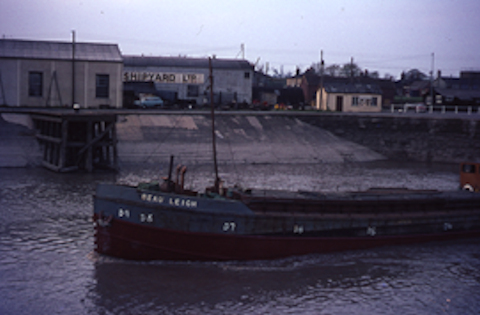
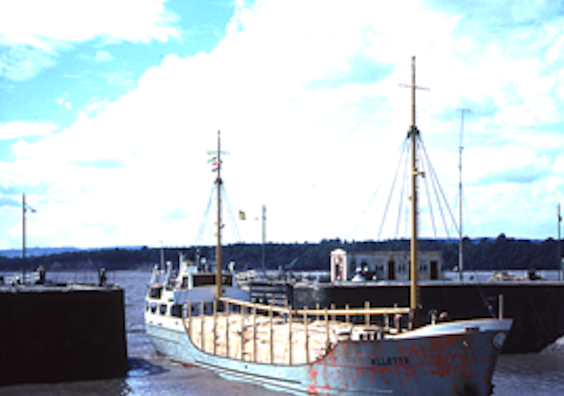
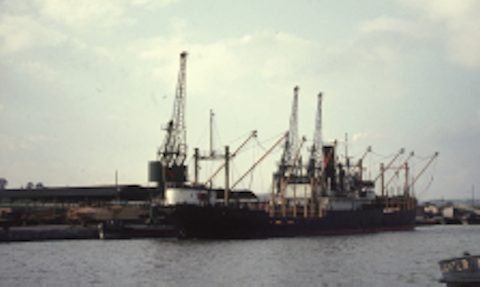
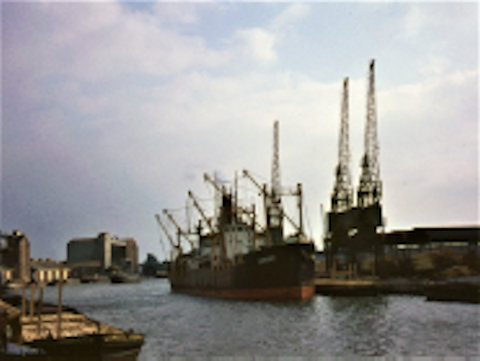
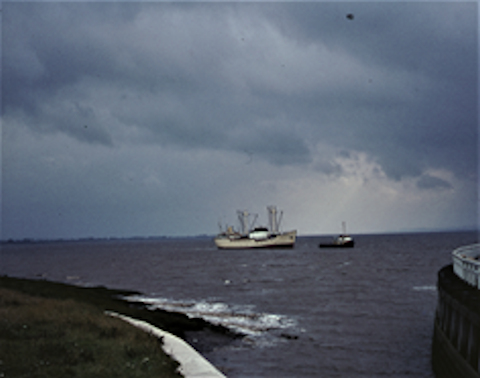
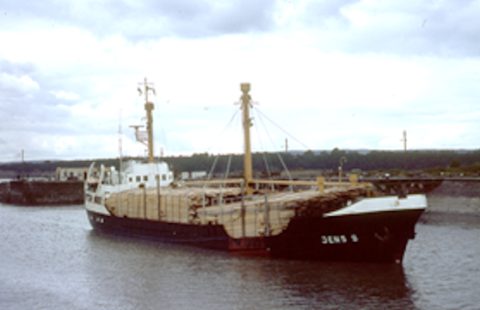
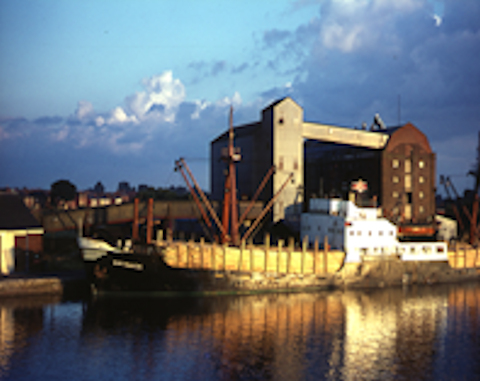
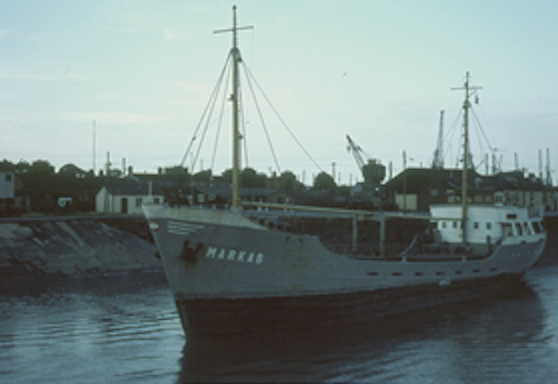
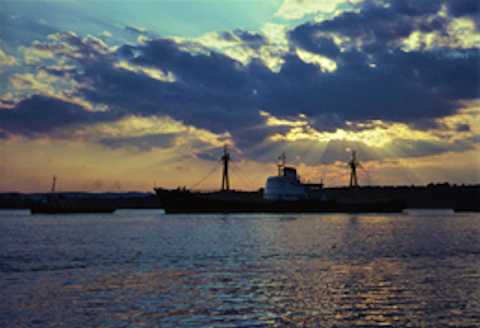
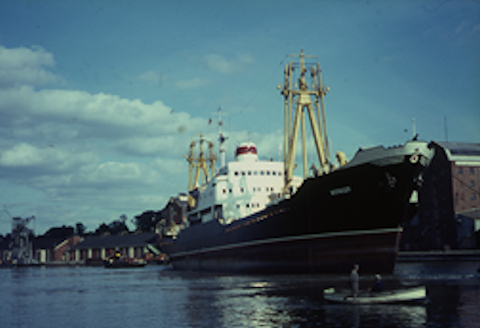
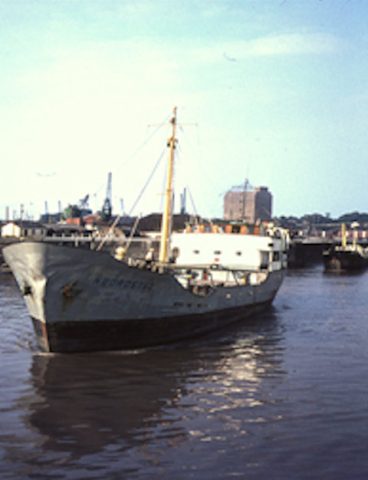
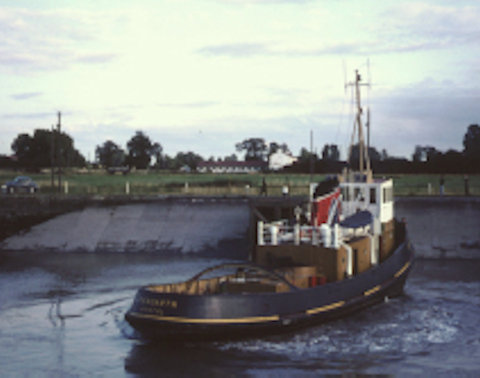
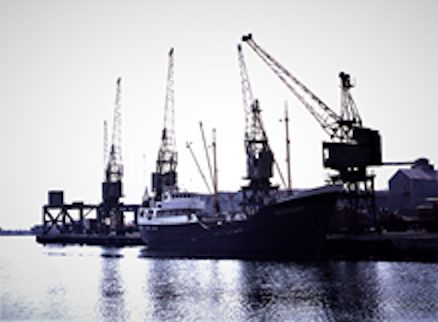
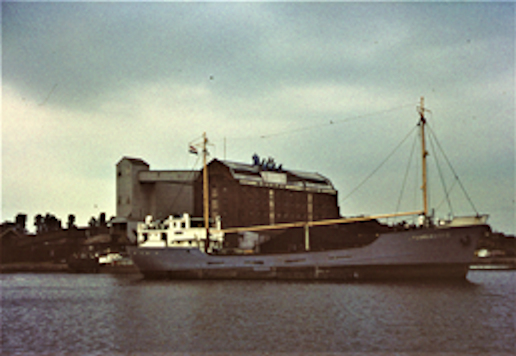
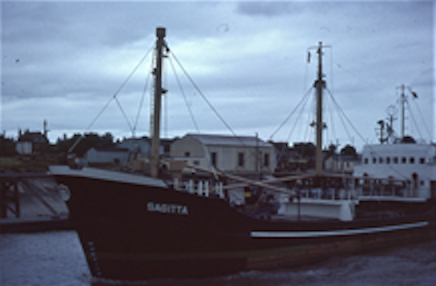
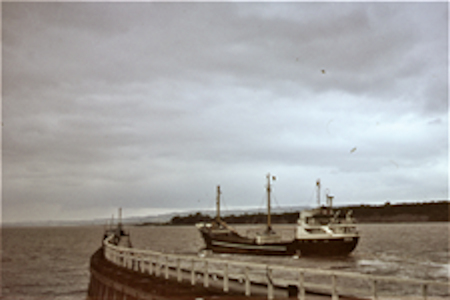
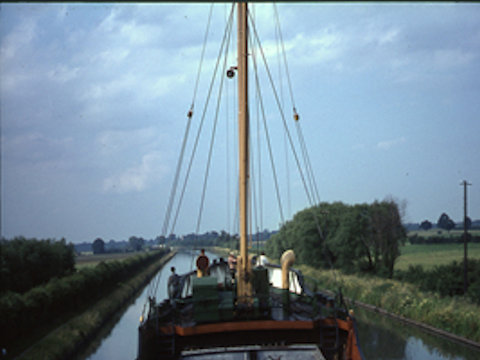
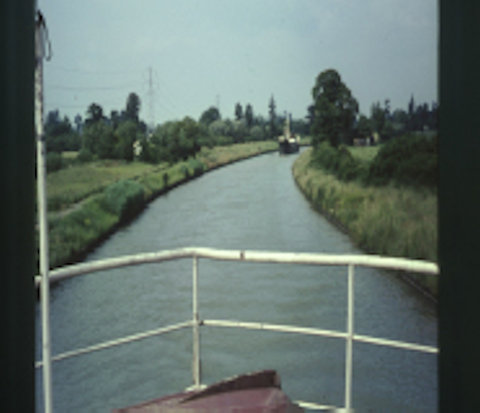
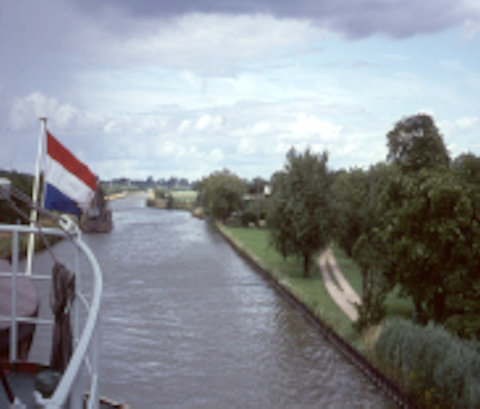
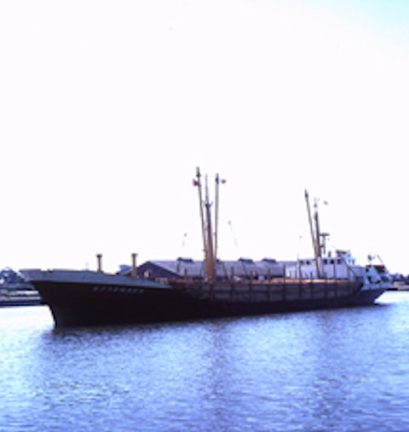
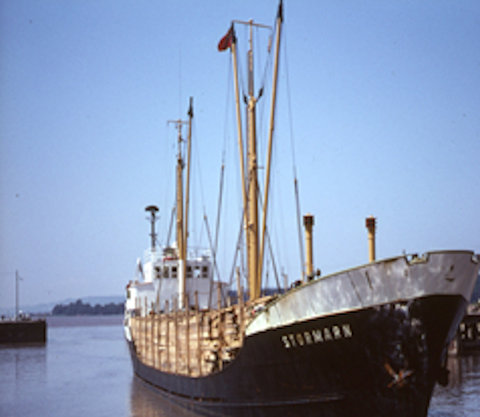
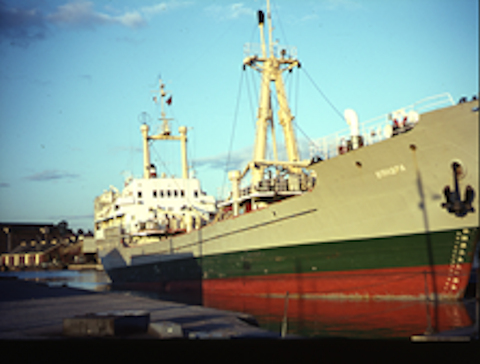
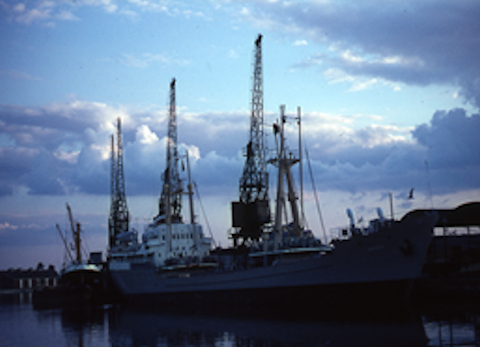
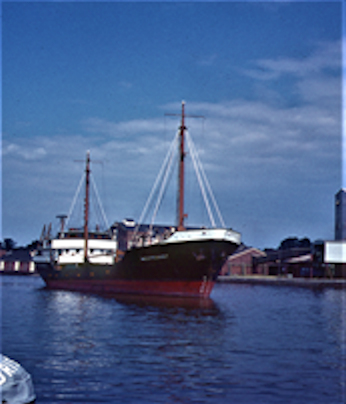
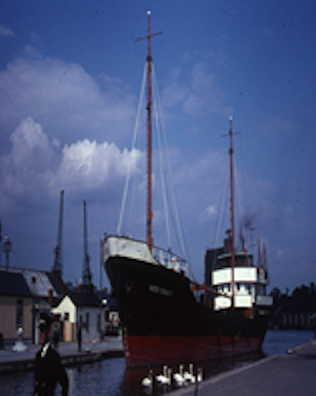
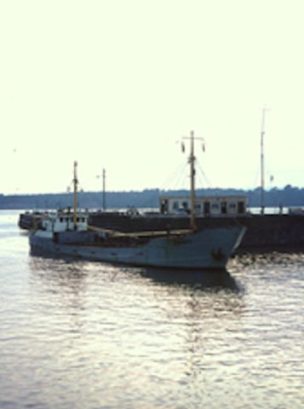
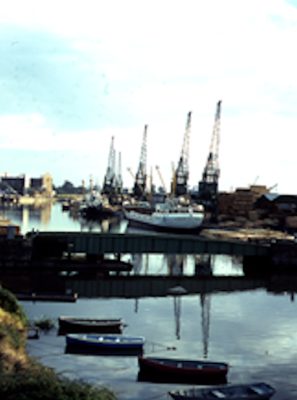
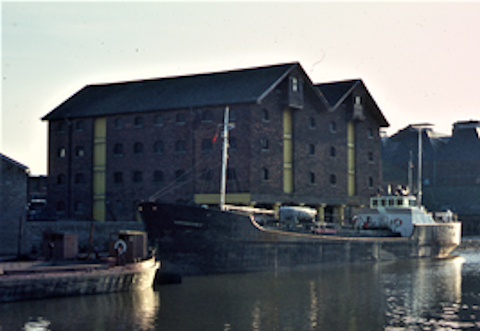
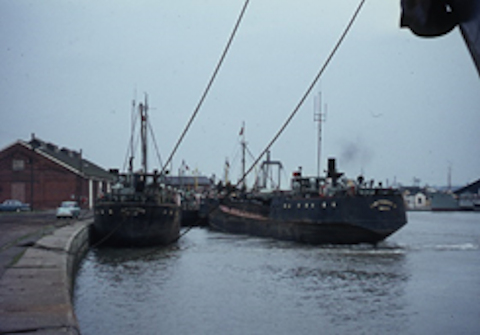
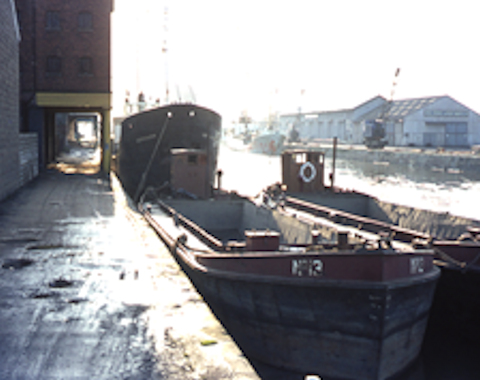
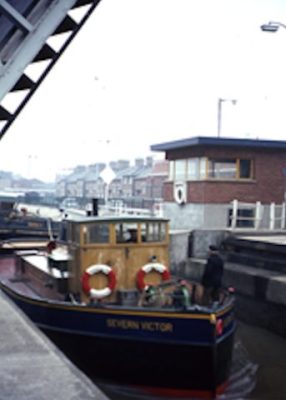
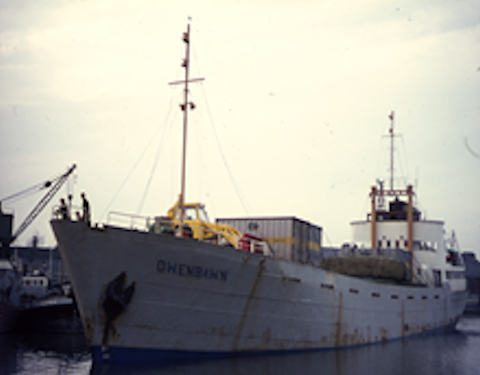
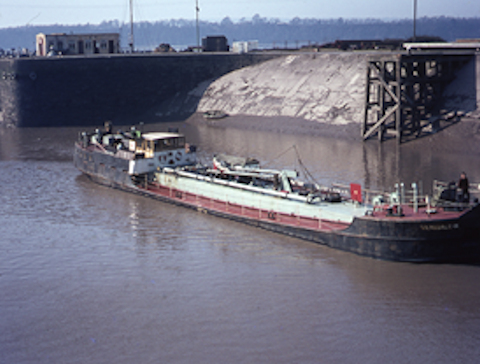
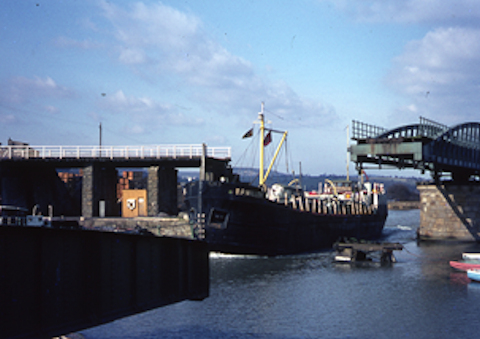
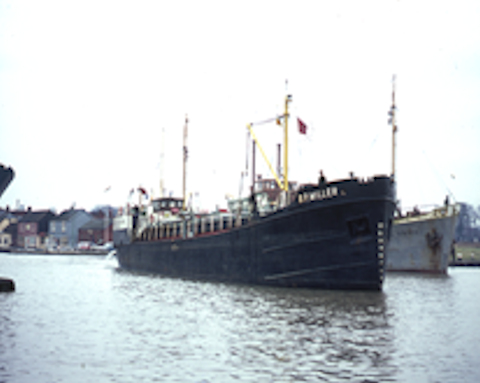
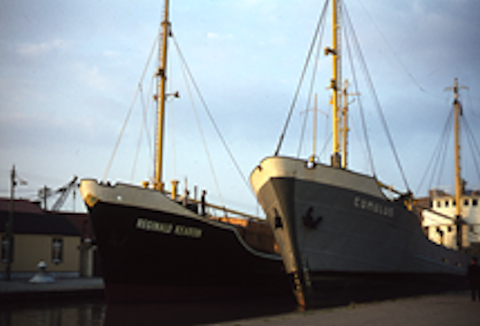
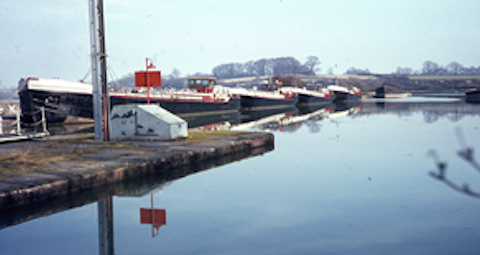
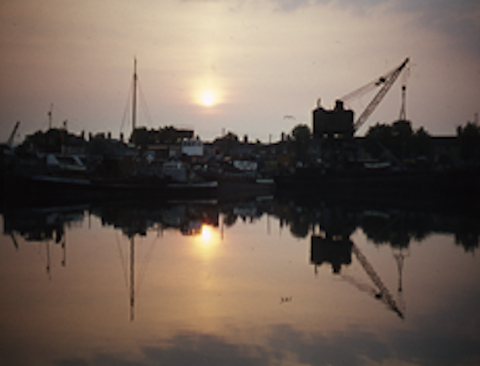
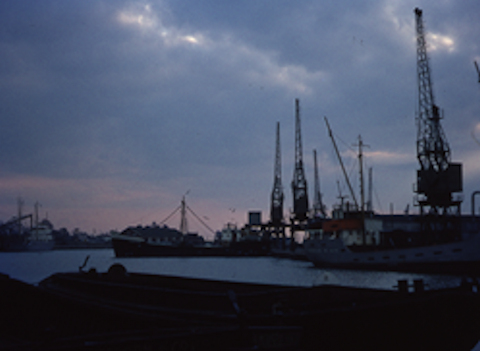
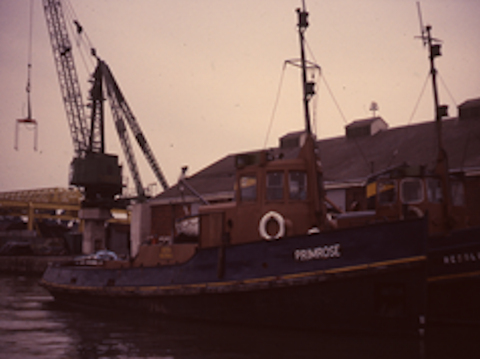
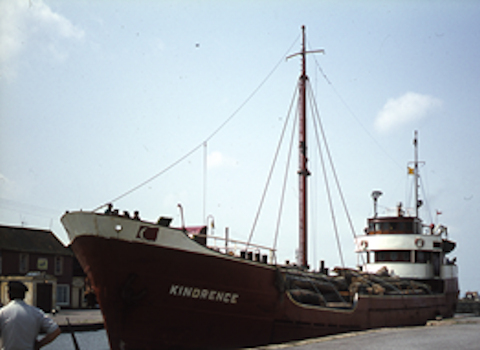
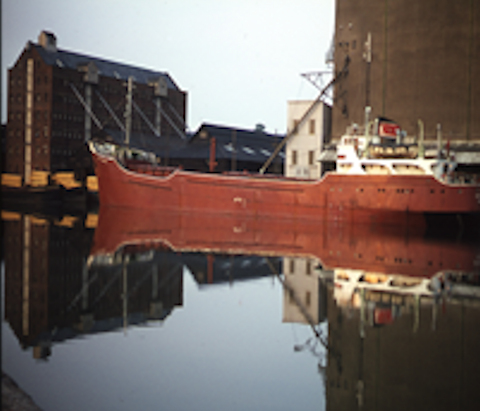
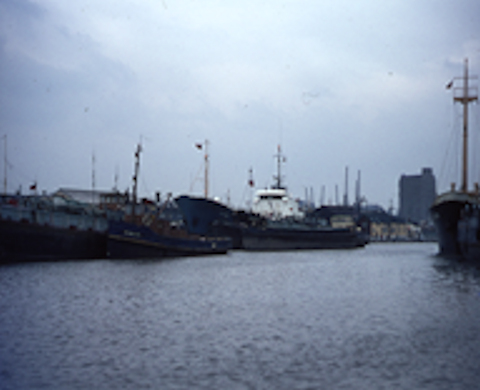
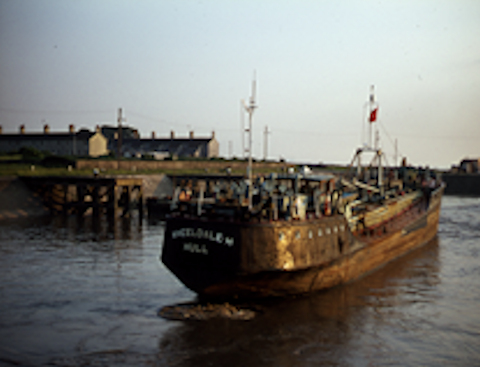
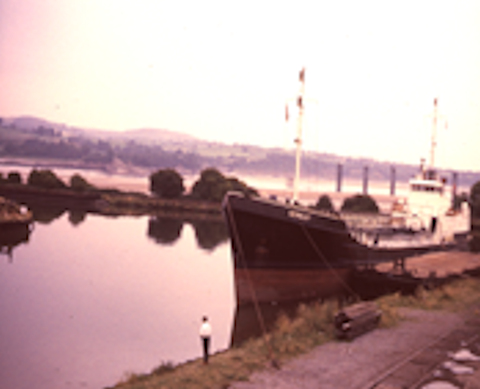
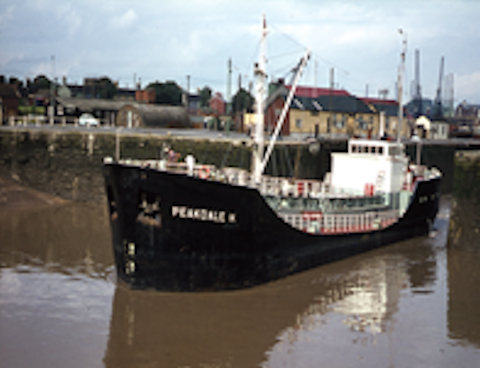
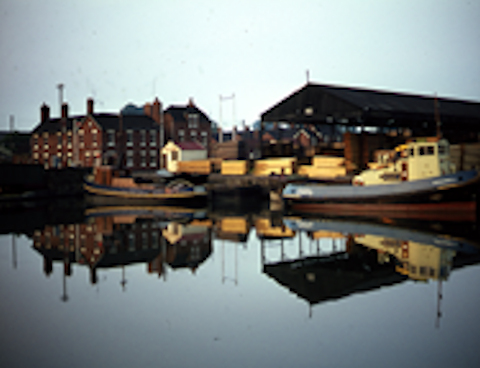

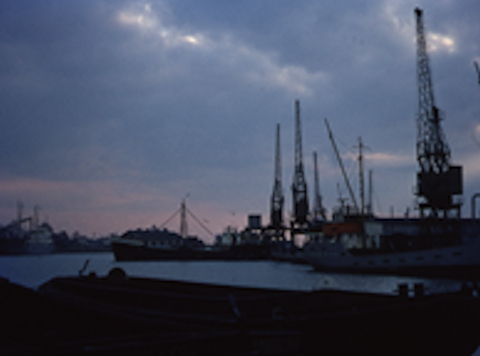
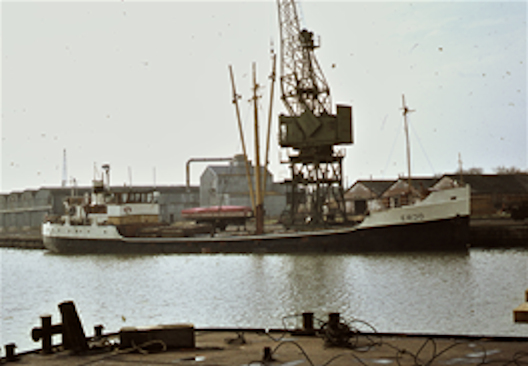
To pause place cursor inside image
Now and Then 1:
Taking a Stroll Through the Site of The Purton Hulks.
Photography by Janet Presley
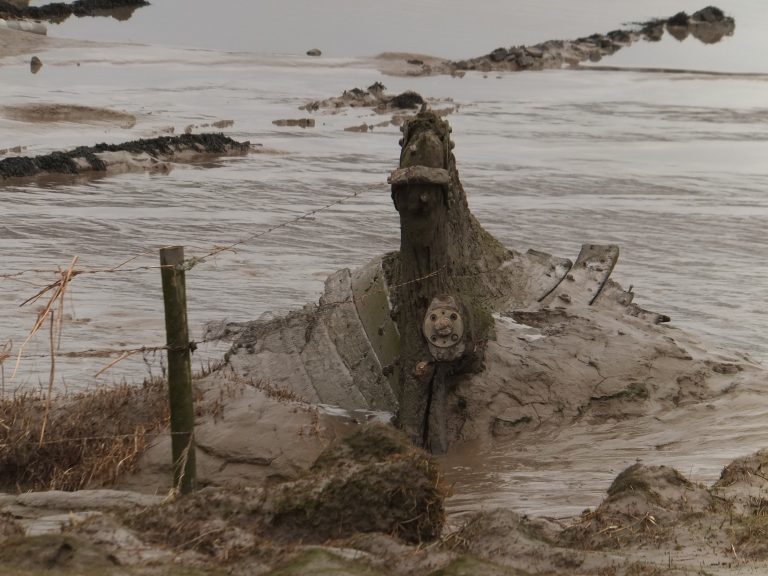
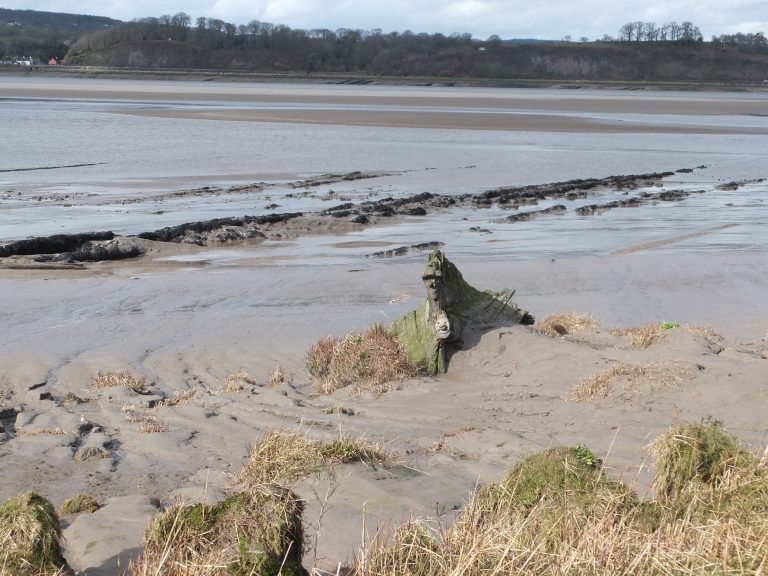
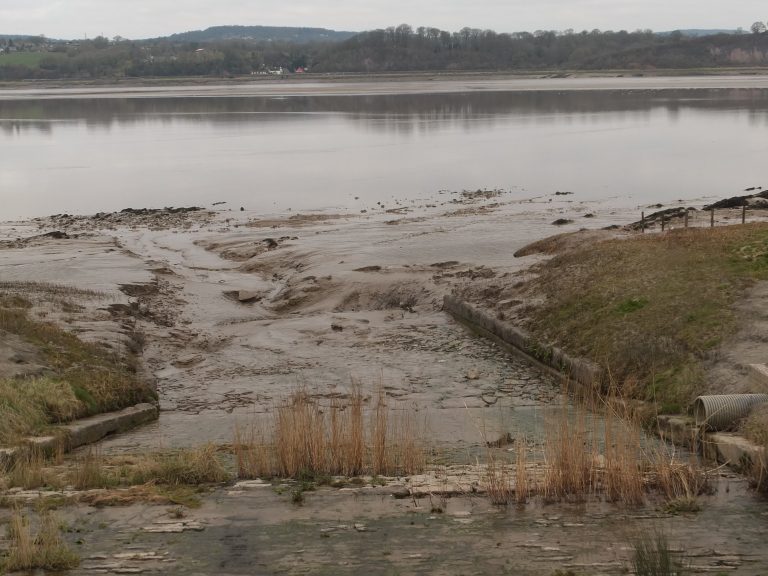
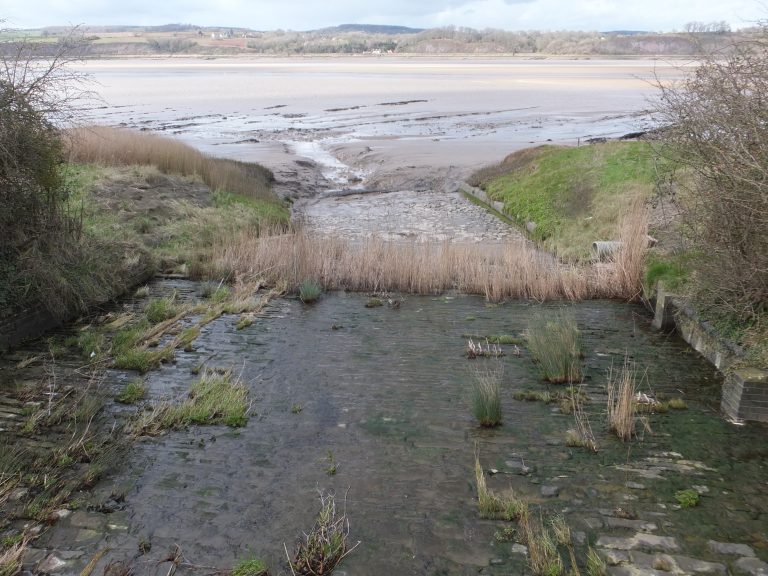
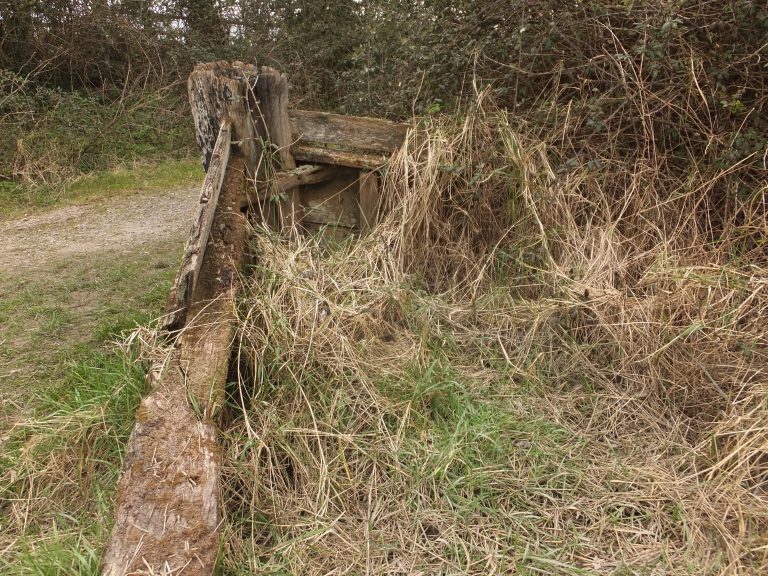
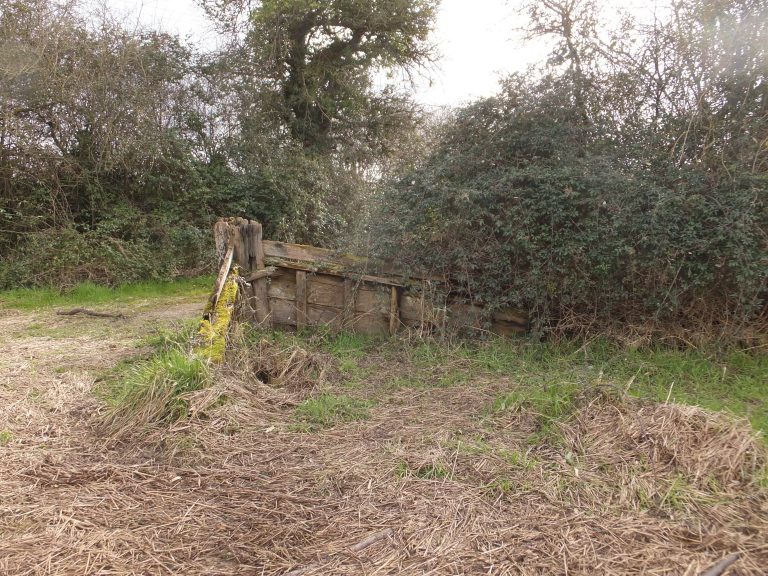
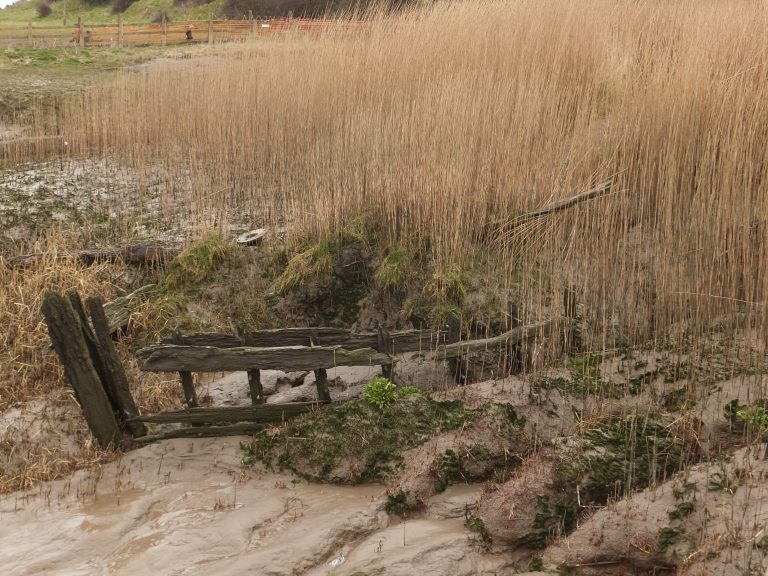
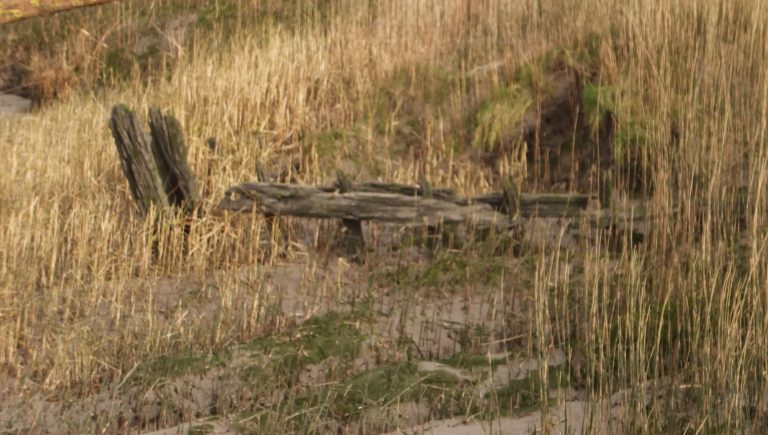
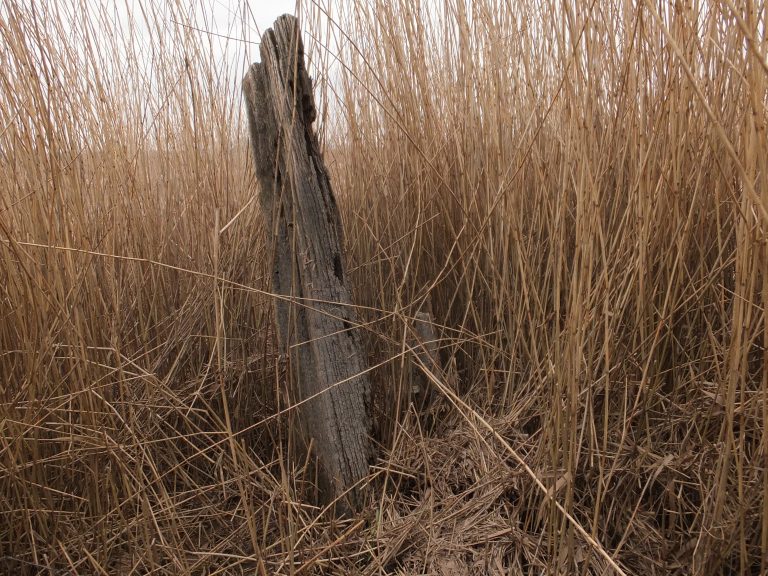
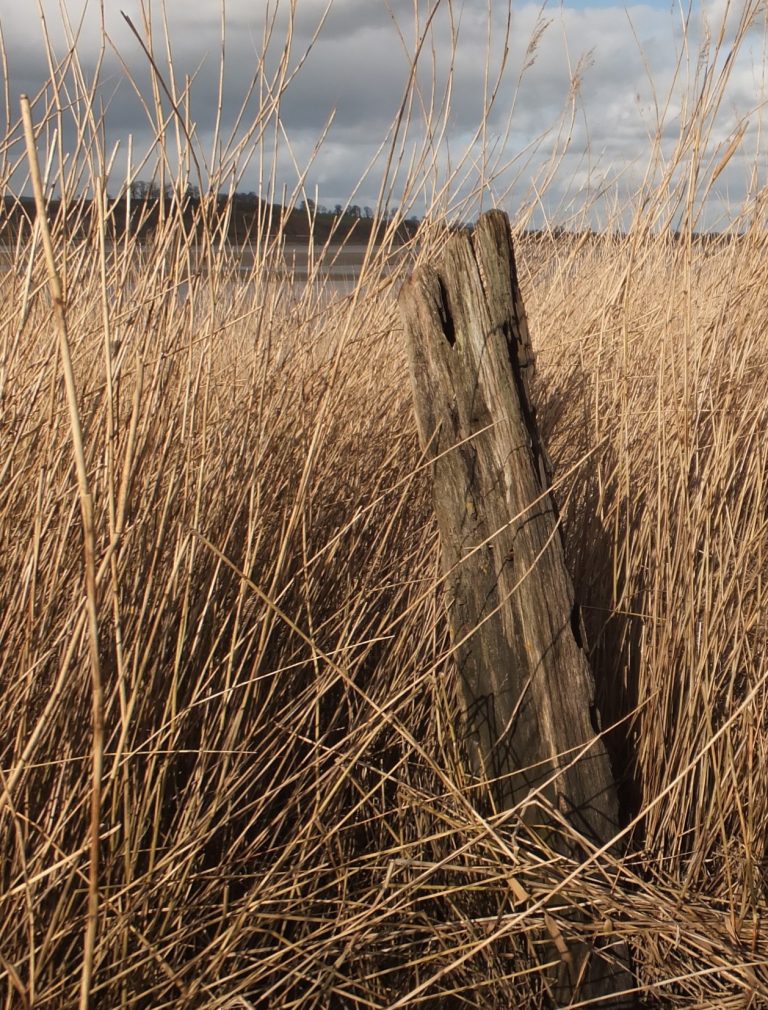
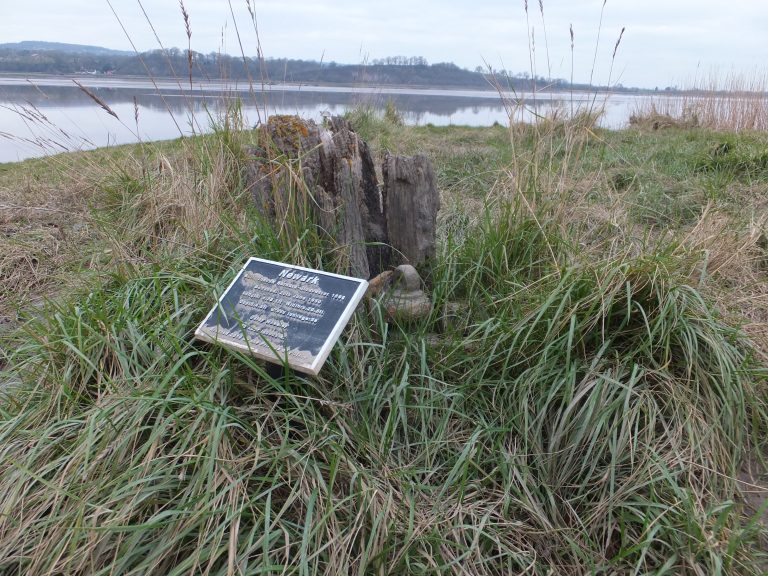
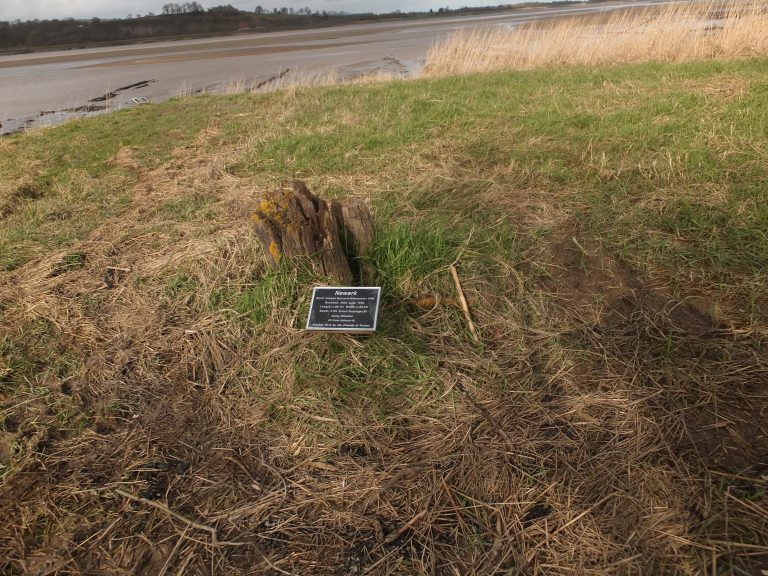
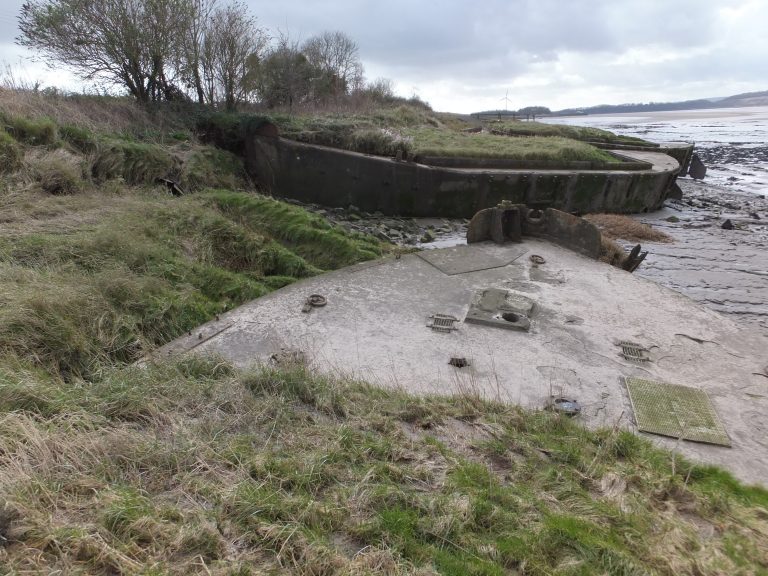
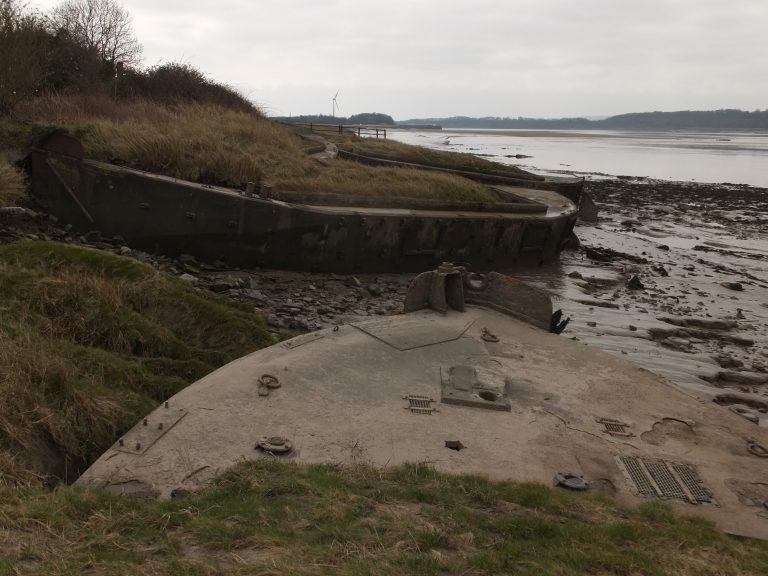
To pause place cursor inside image
Now and Then 2:
A photographic journey along the Sharpness to Gloucester canal.
Compiled from 1955 images and 2013 photographs taken by Janet Presley
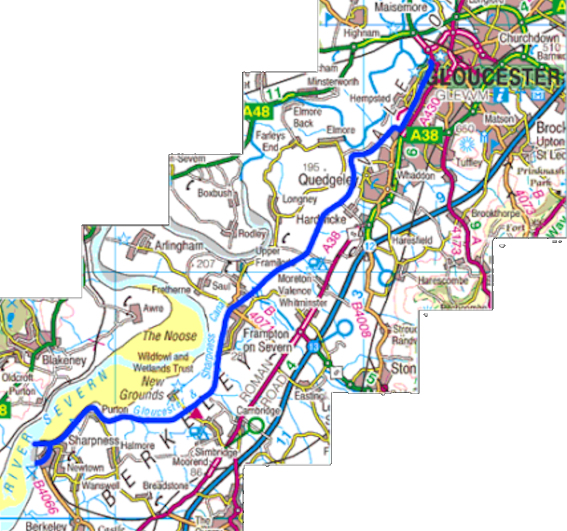
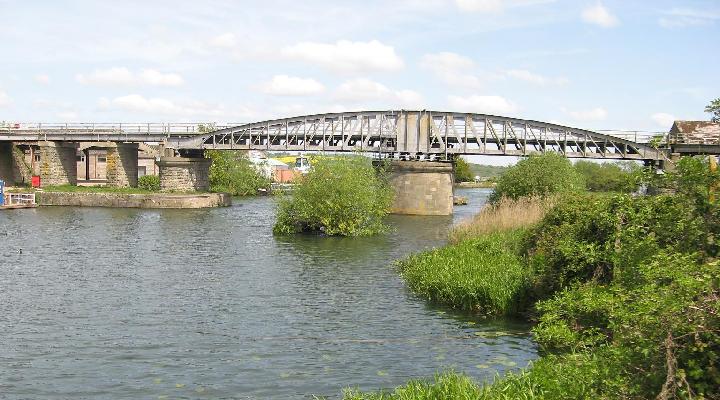
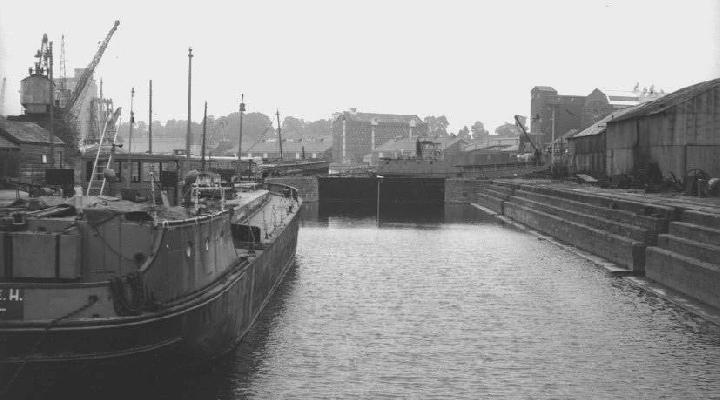
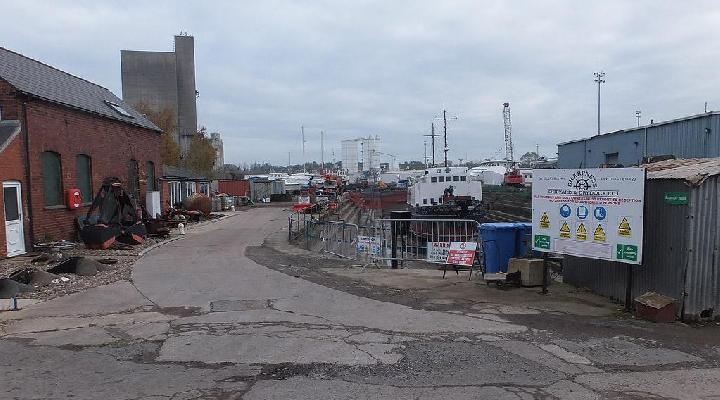
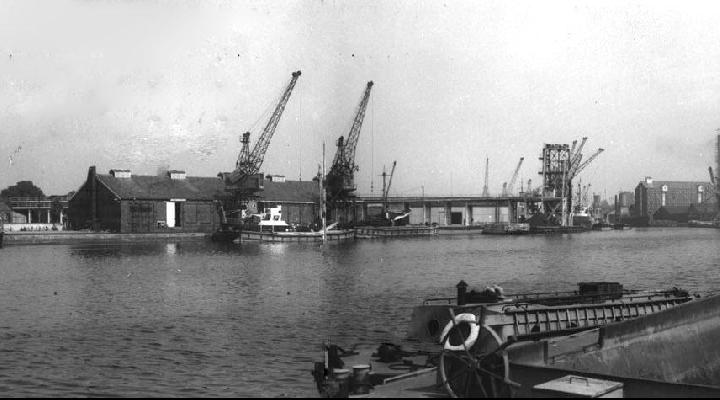
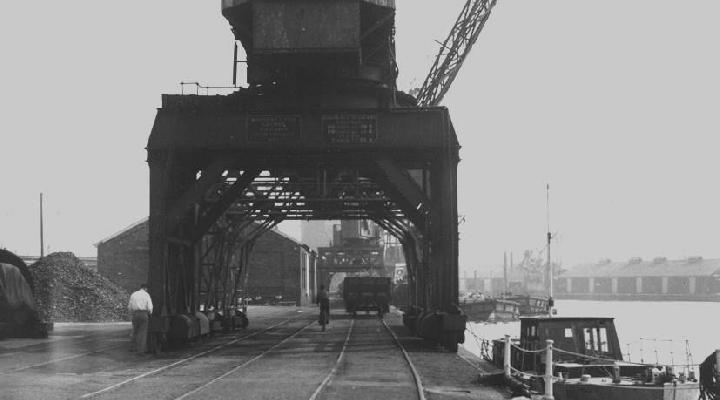
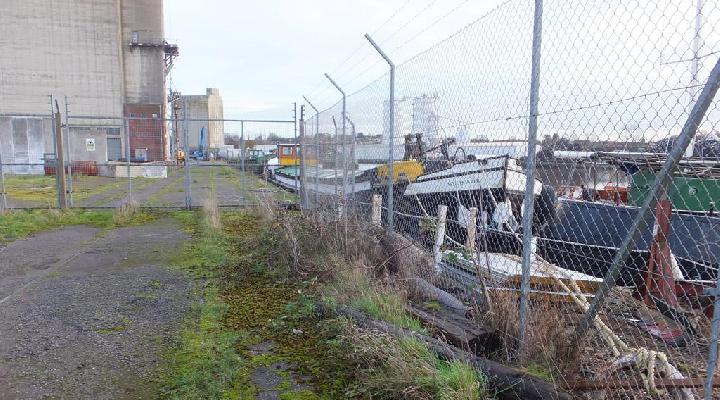
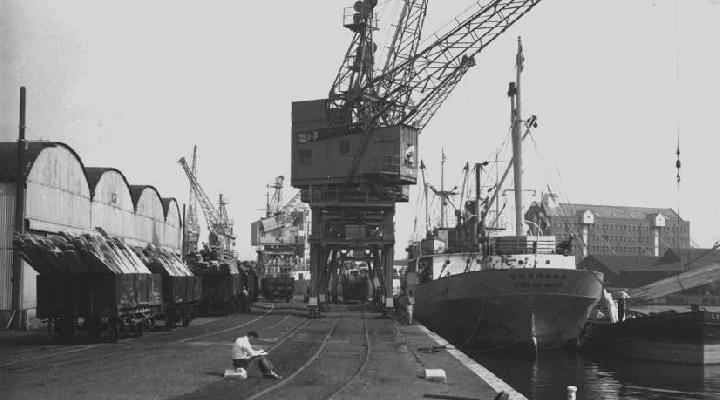

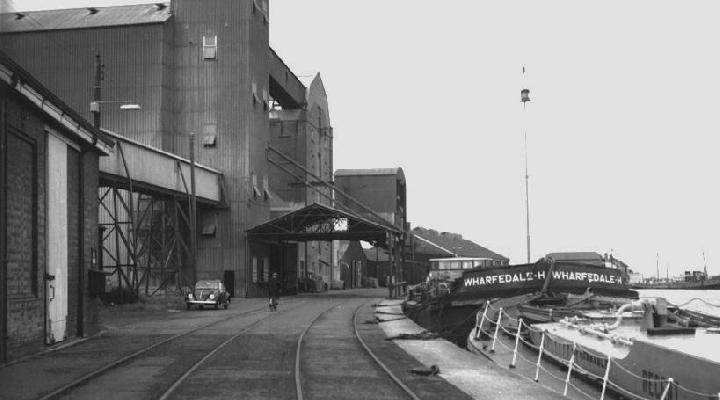
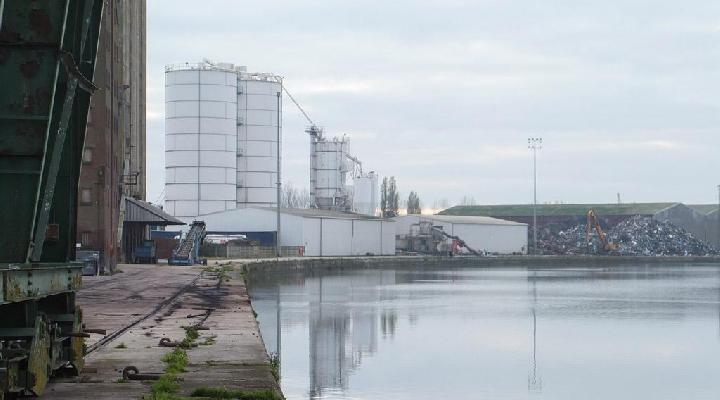
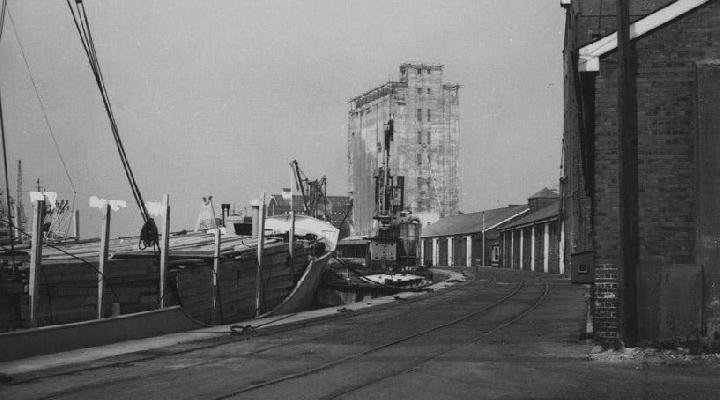
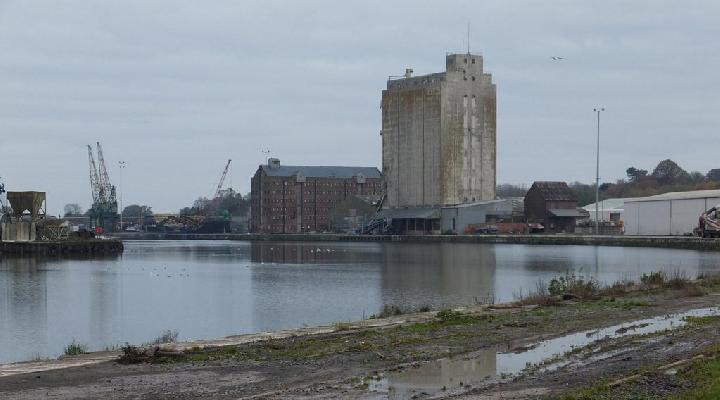
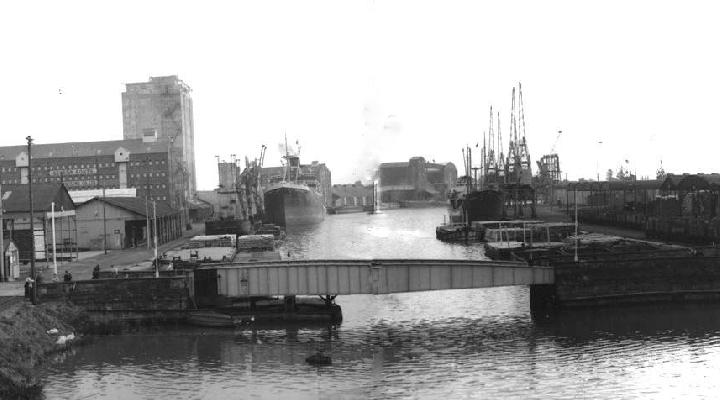
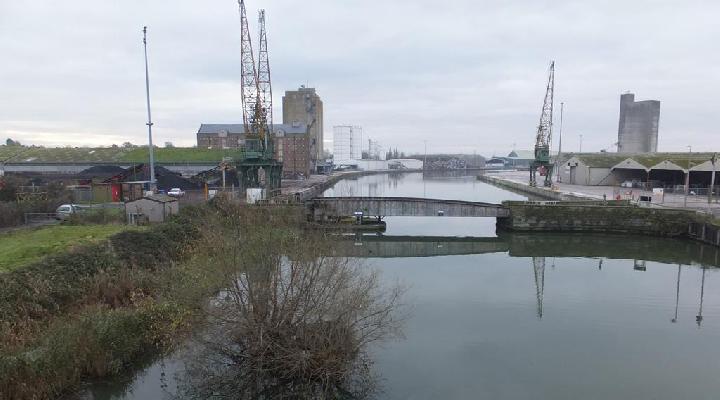
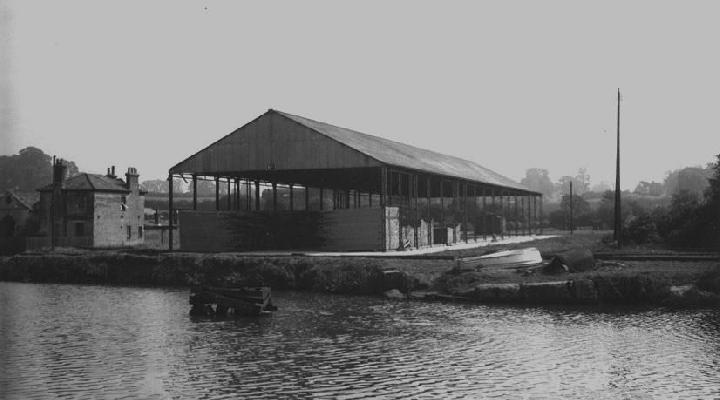
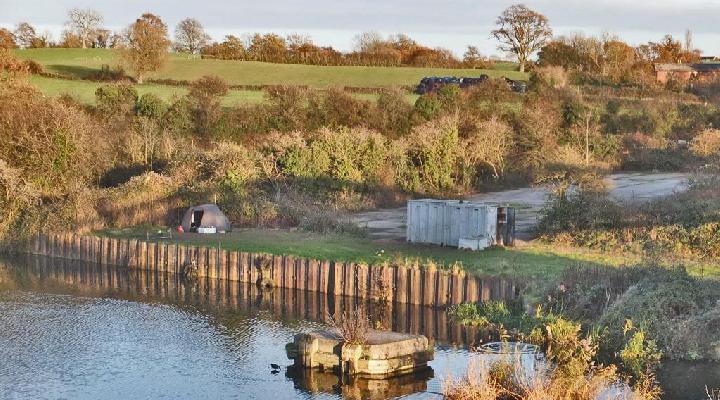
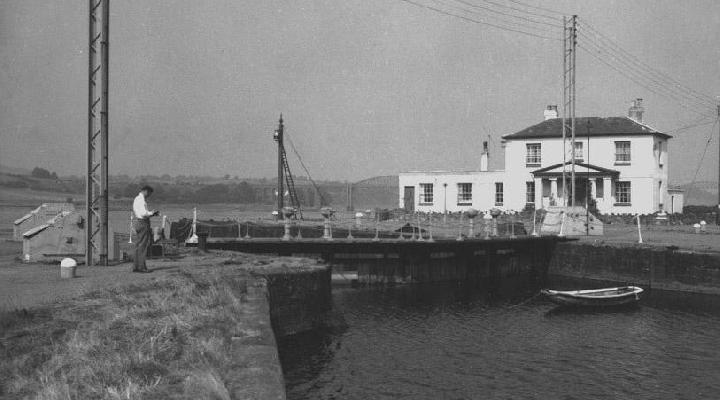
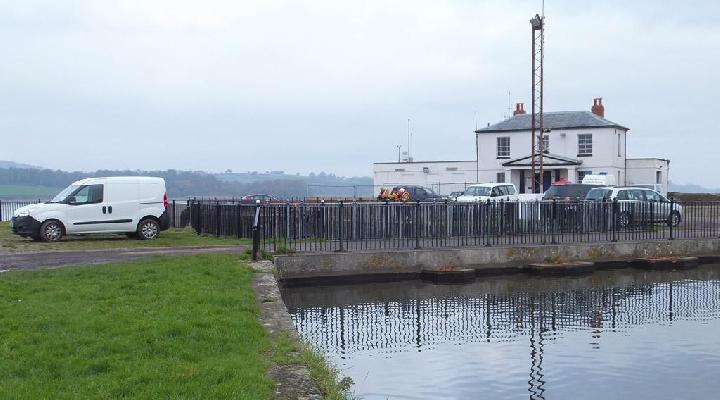
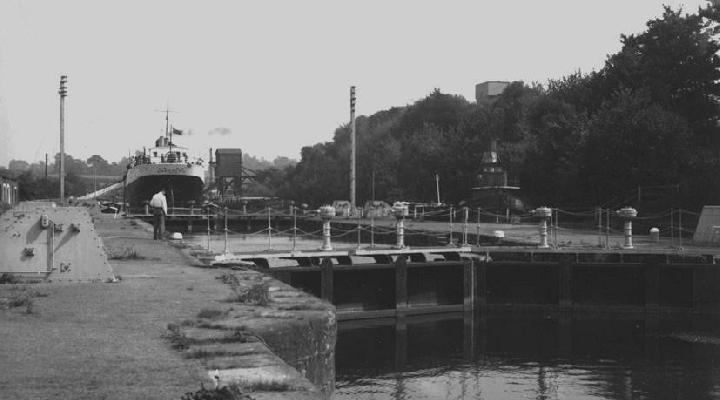
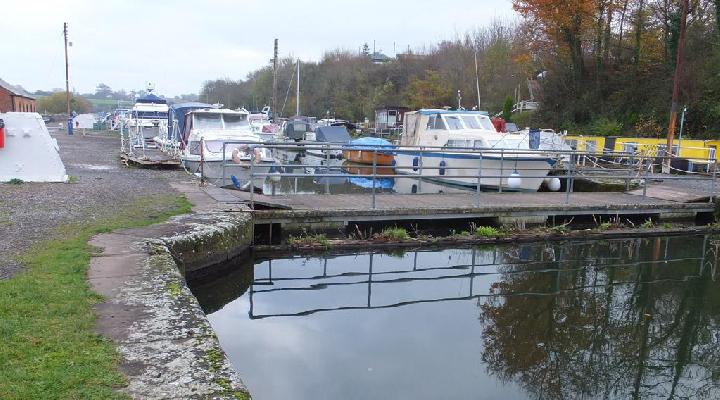
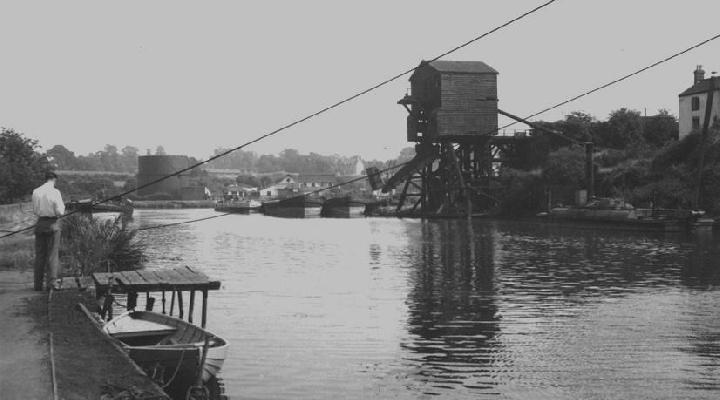
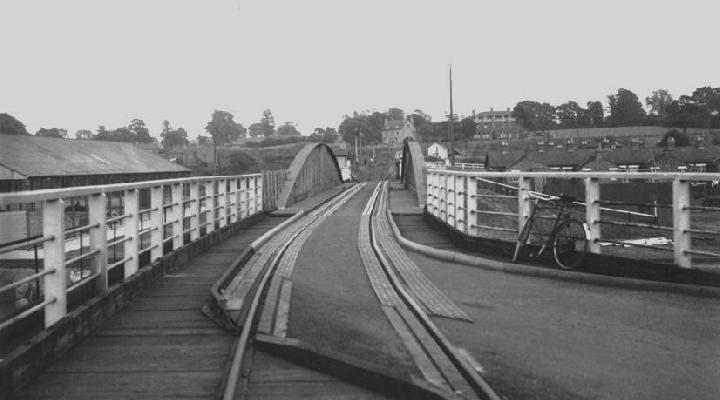
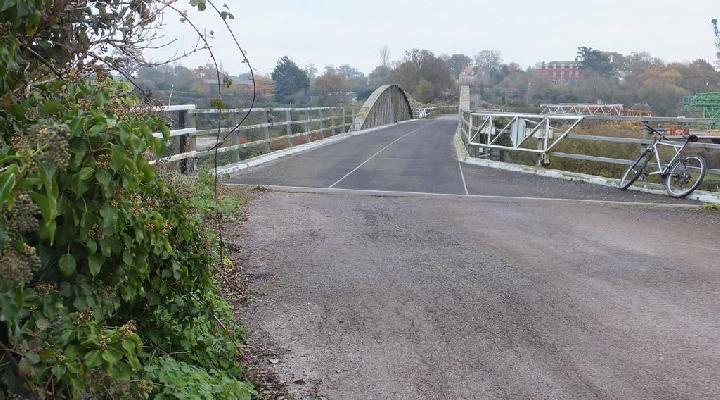
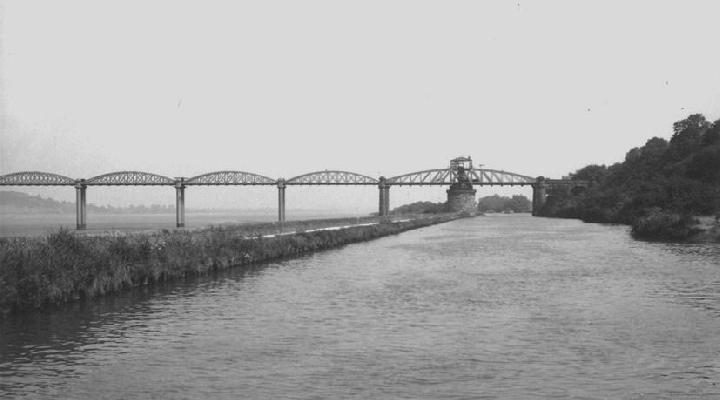
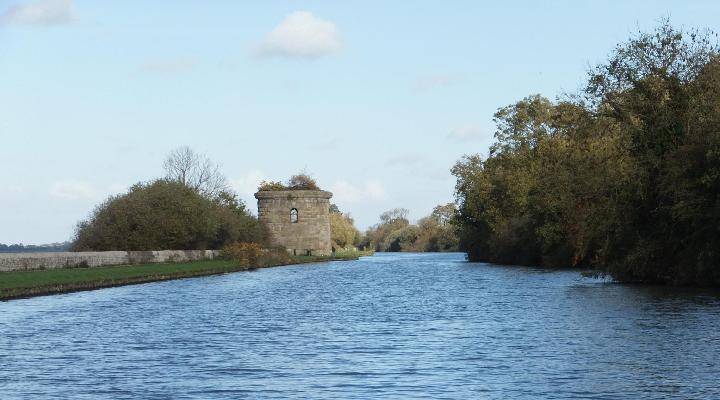
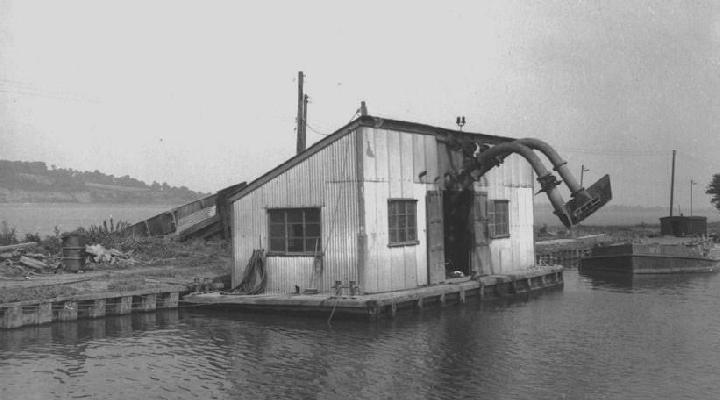
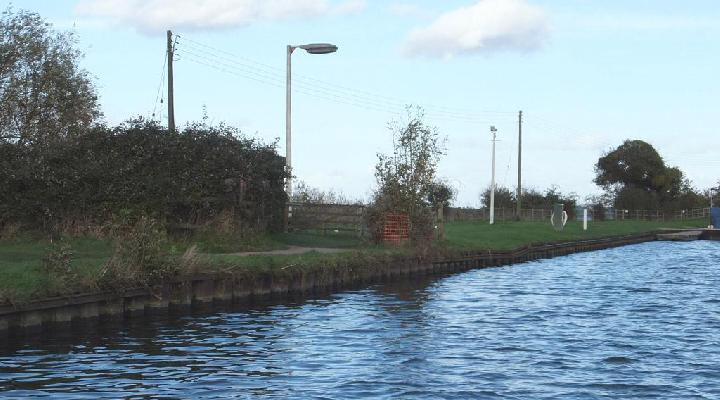
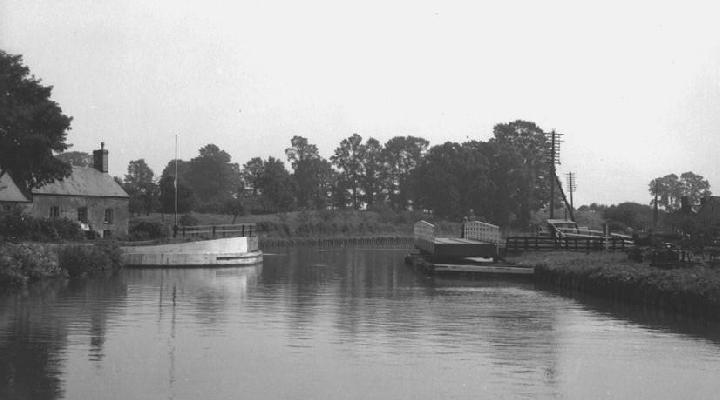
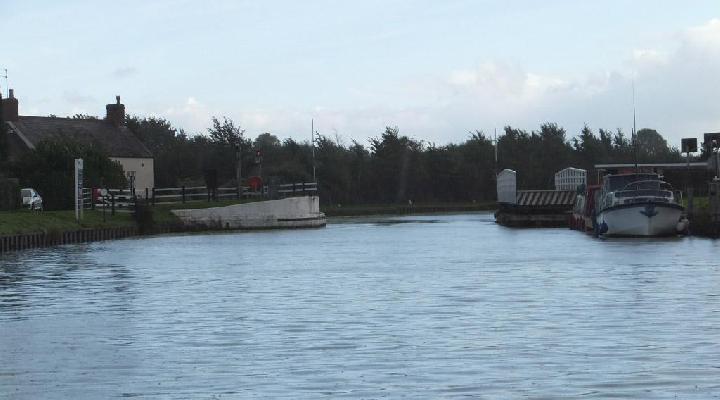
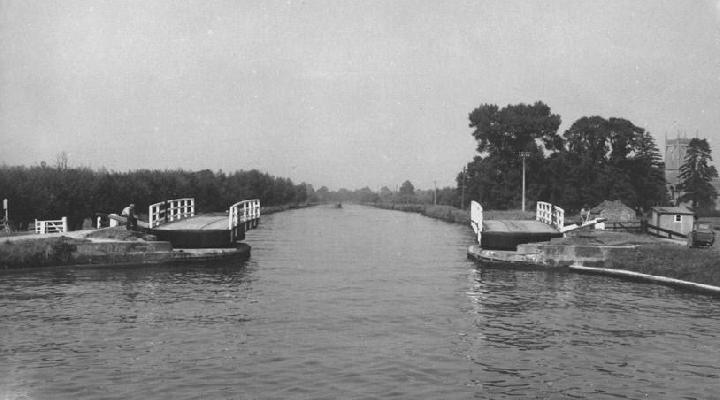
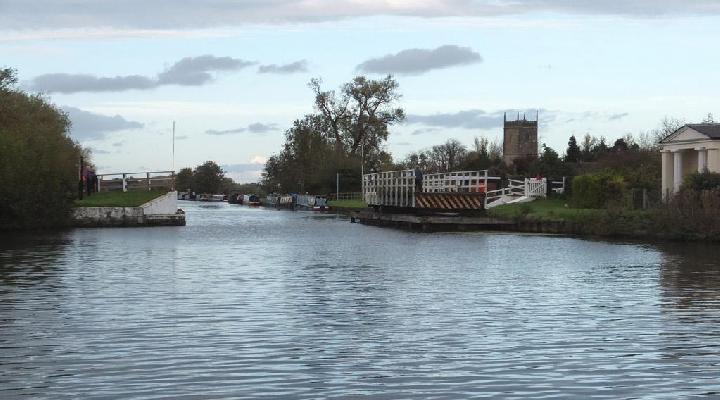
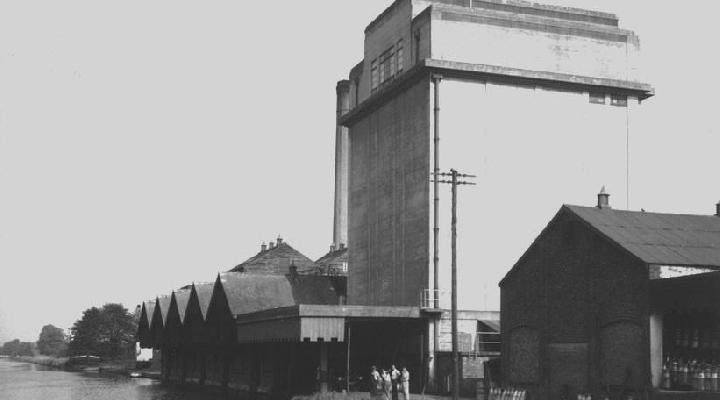
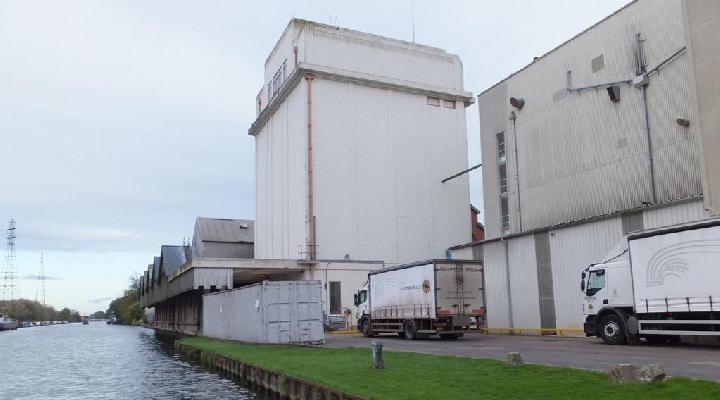
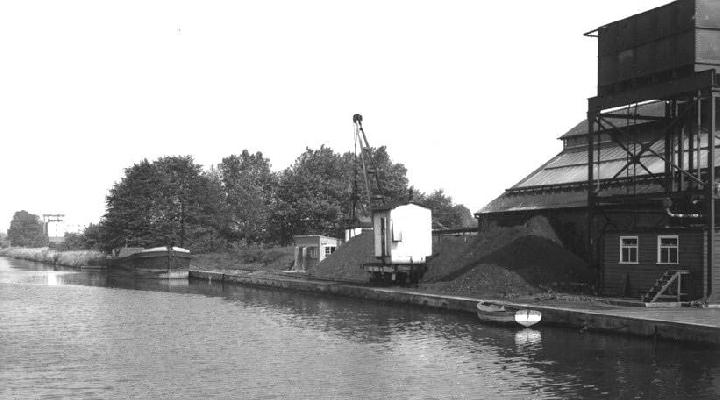
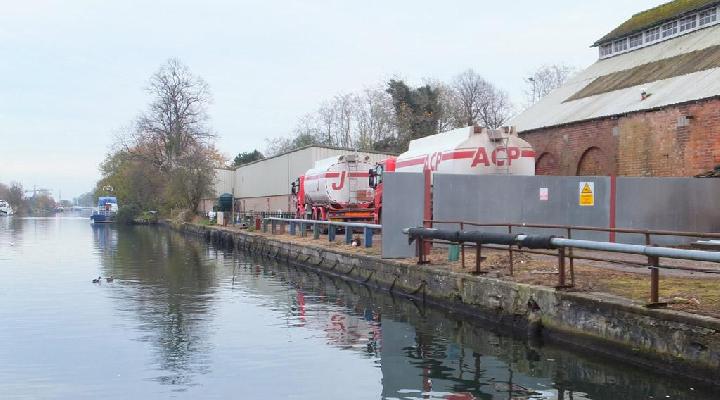
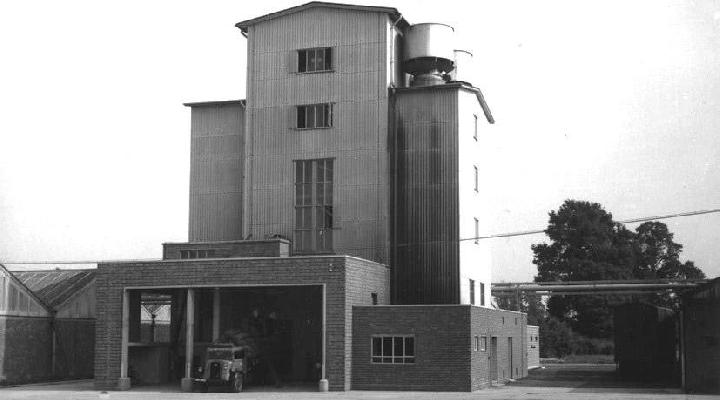
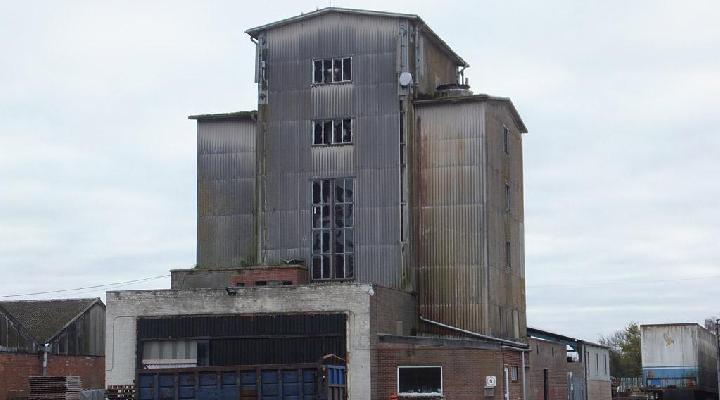
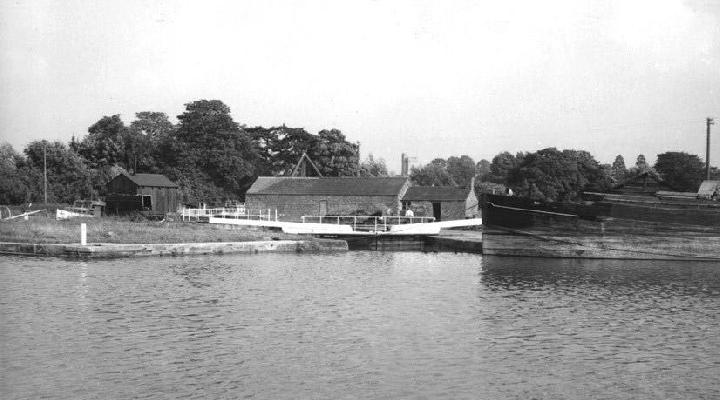
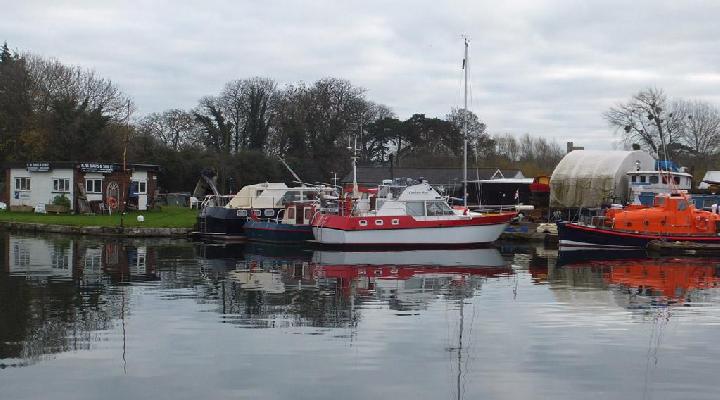
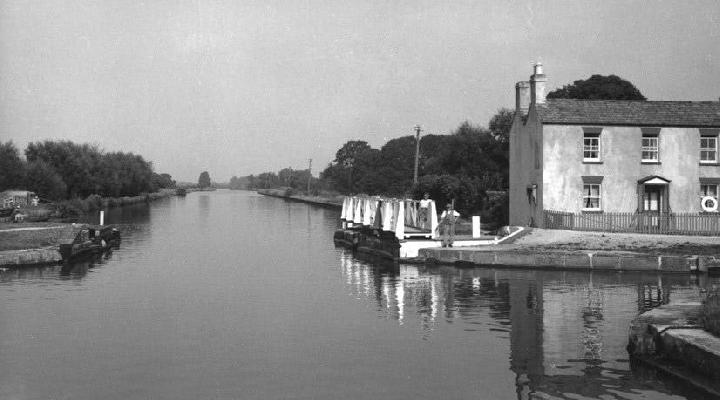
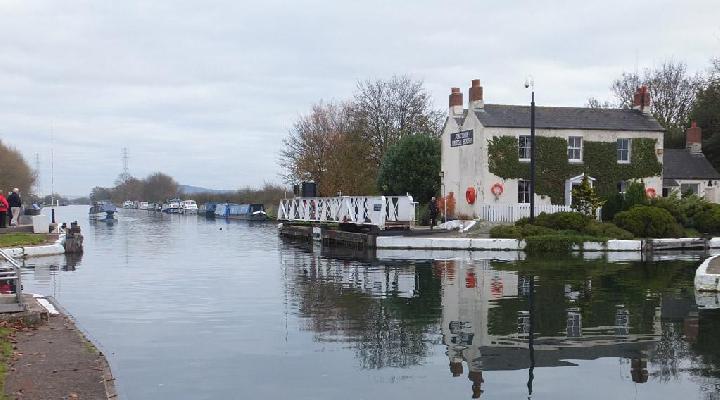
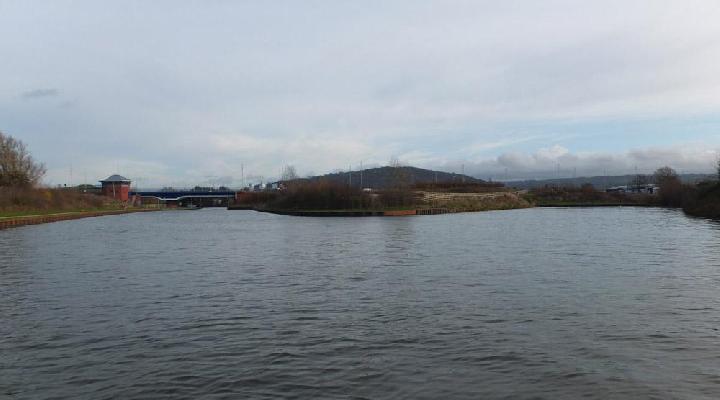
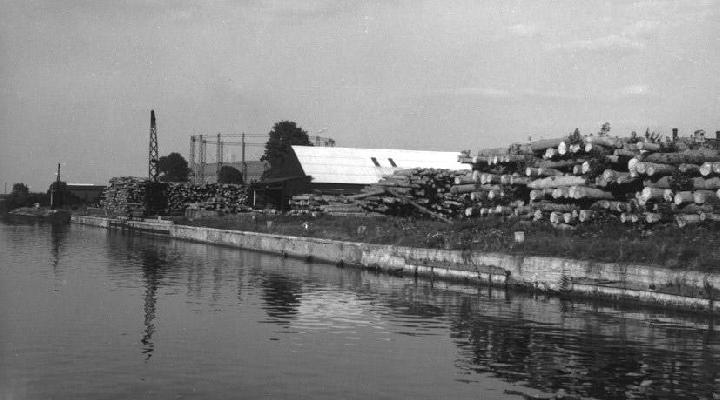
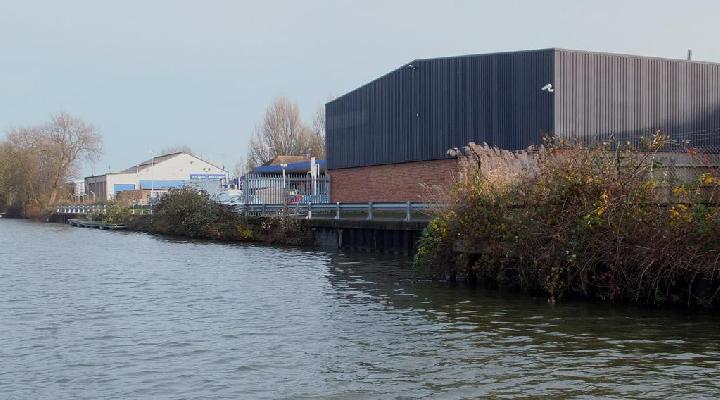
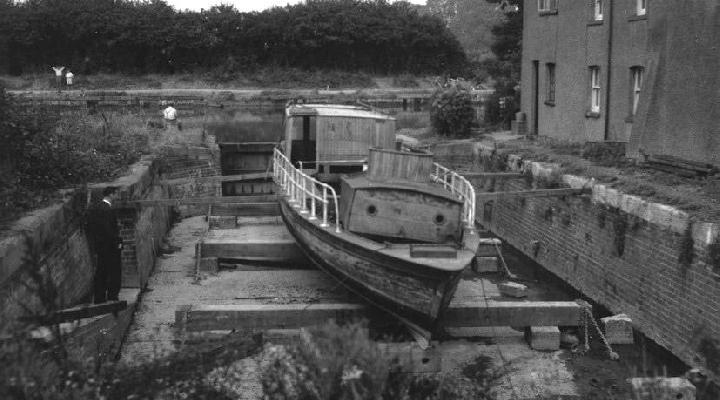
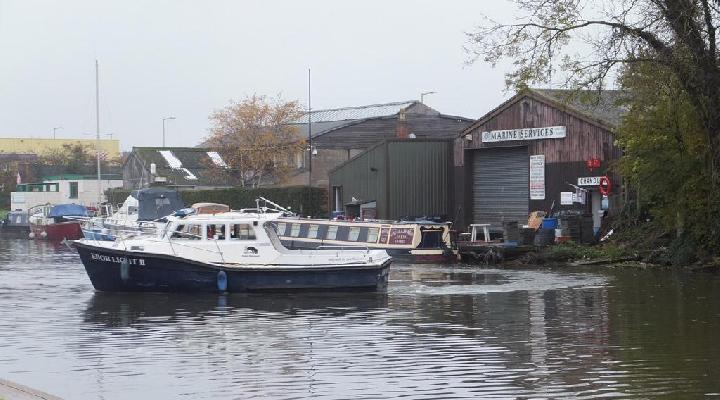
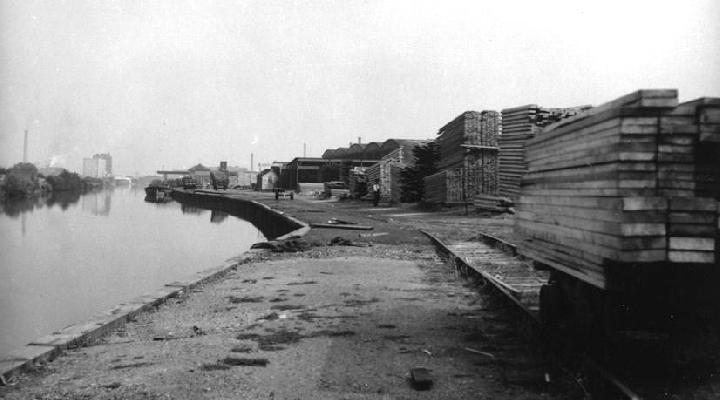
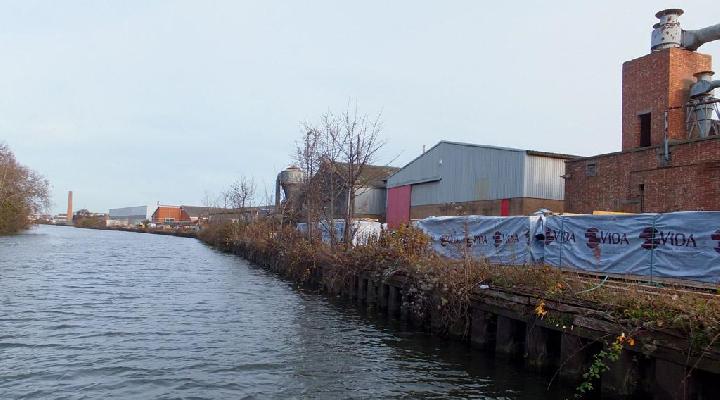
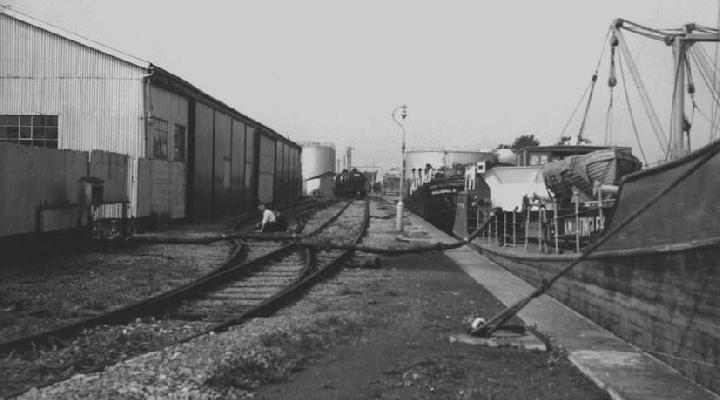
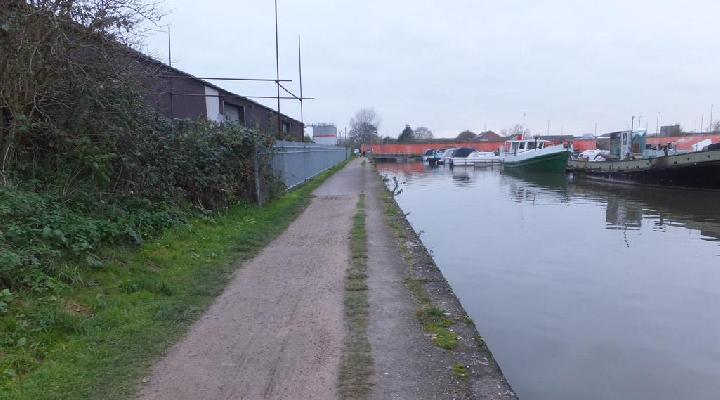
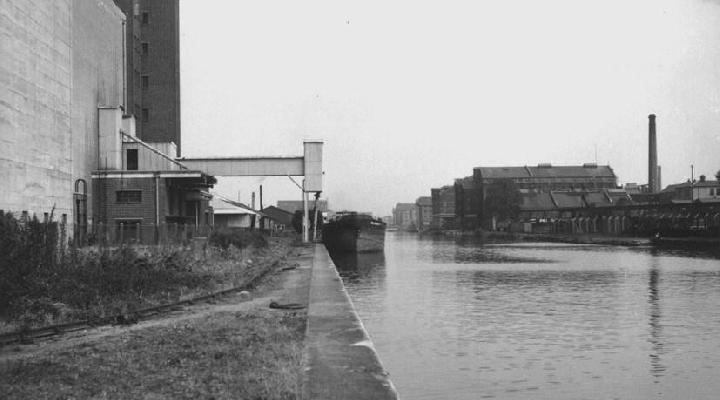
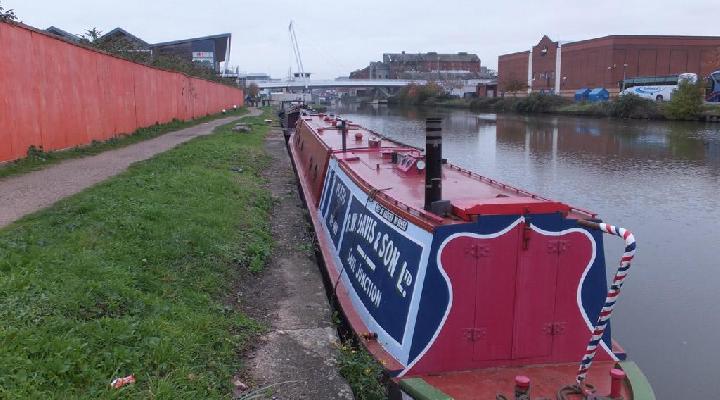
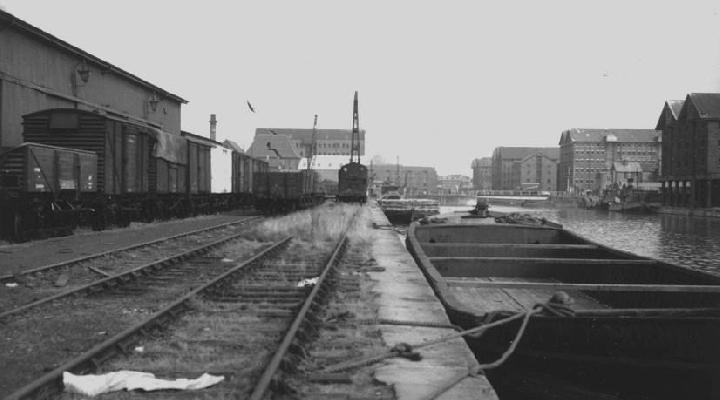
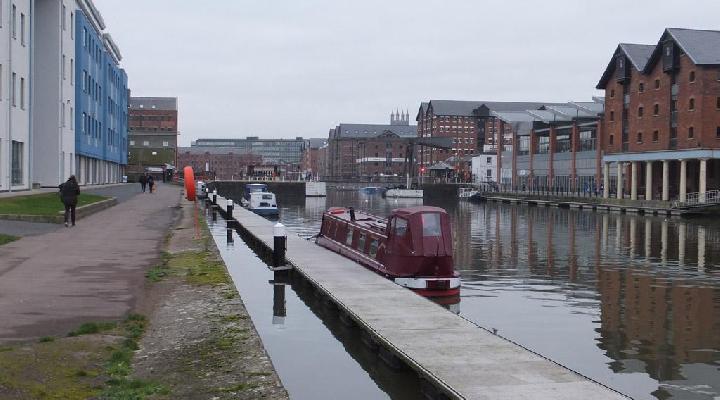
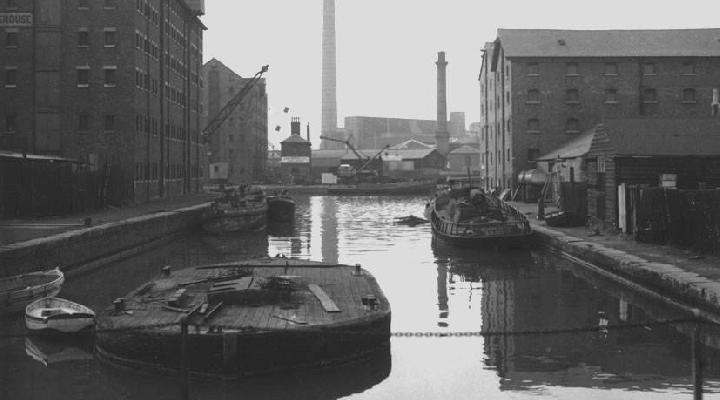
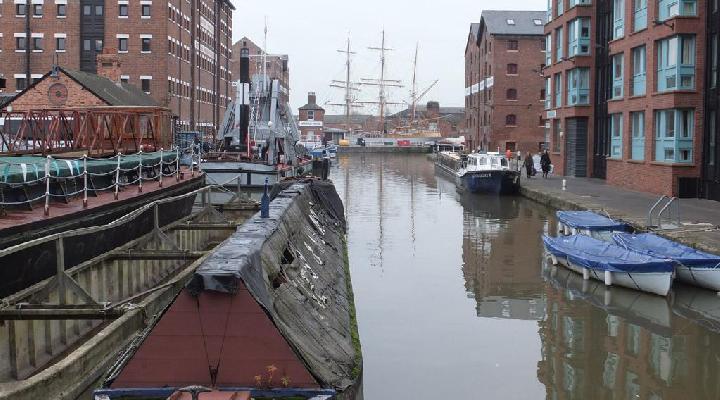
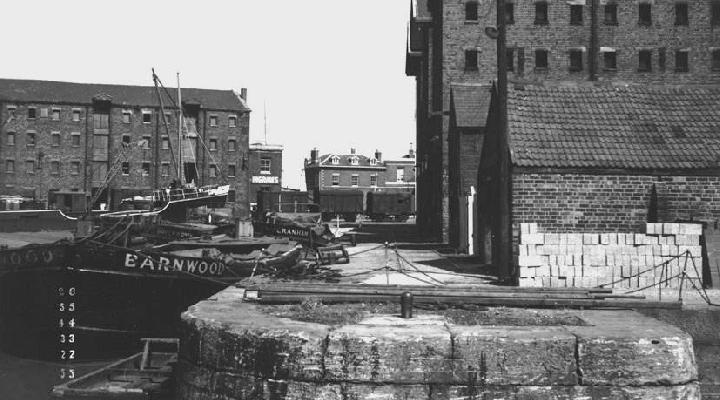
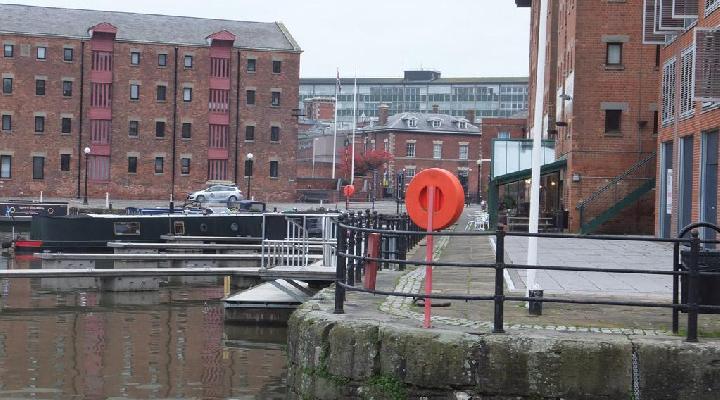
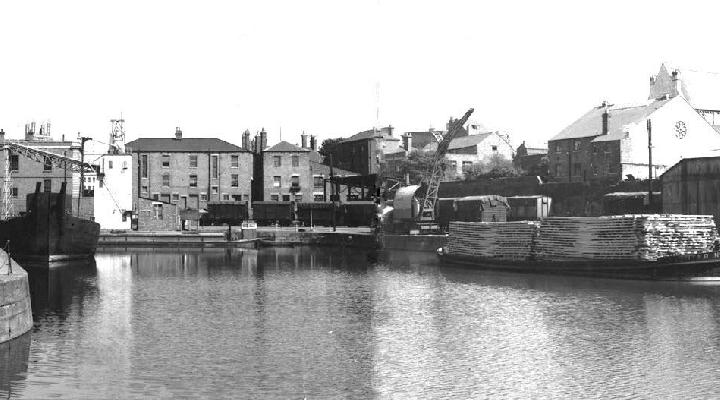
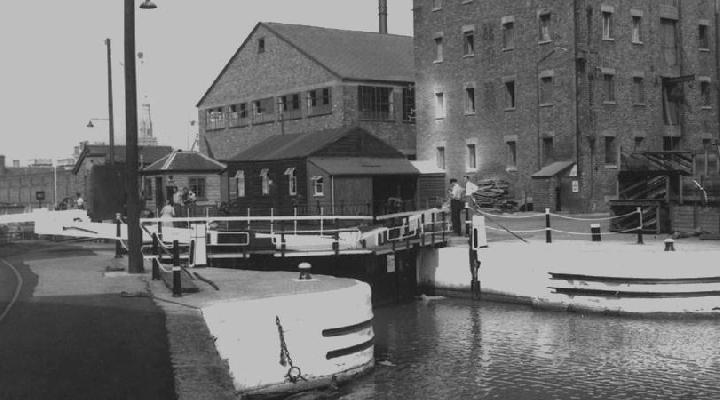
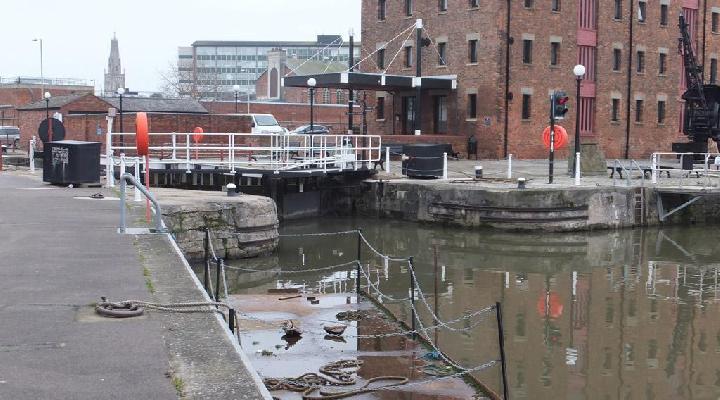
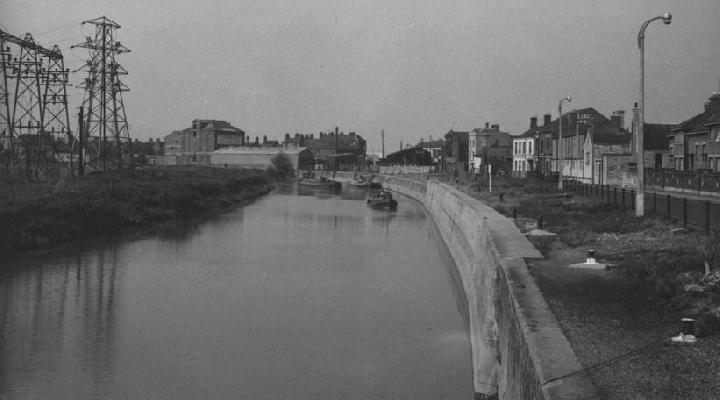
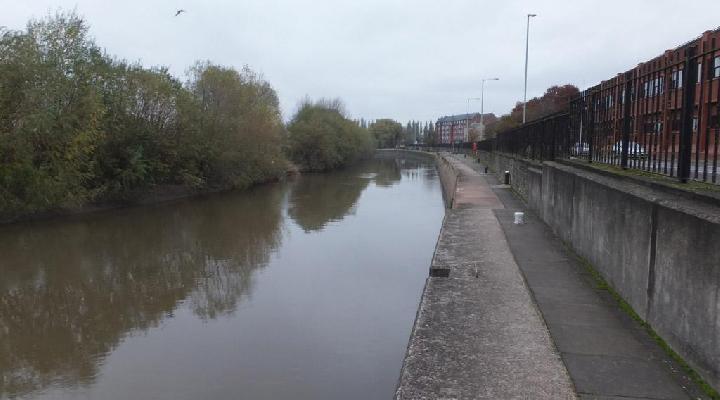
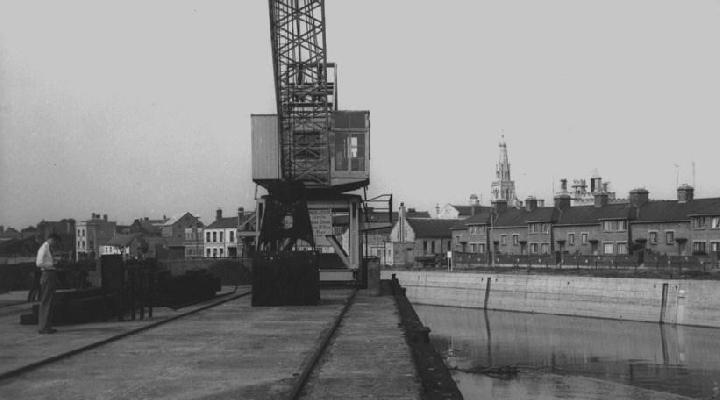
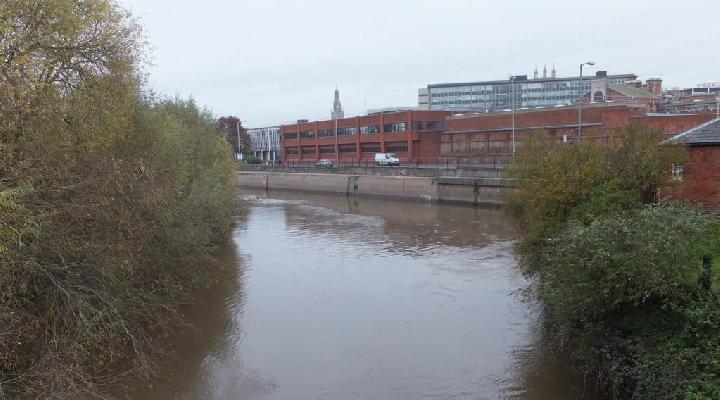
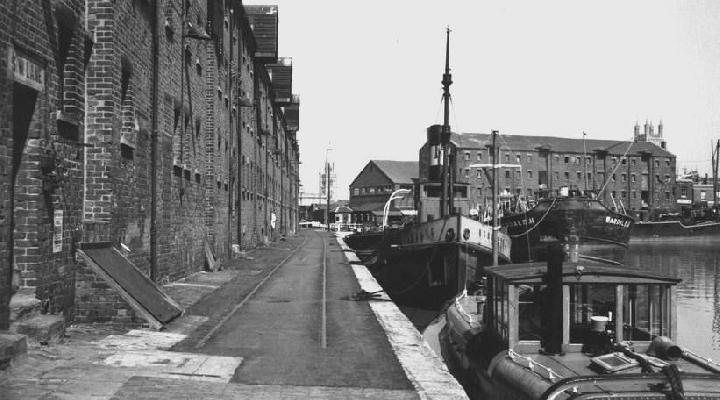
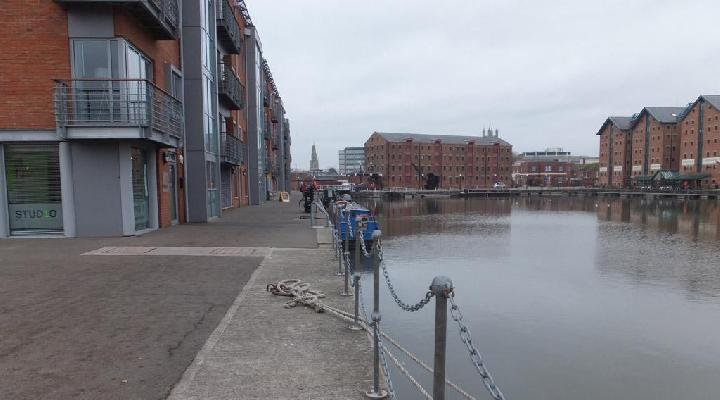
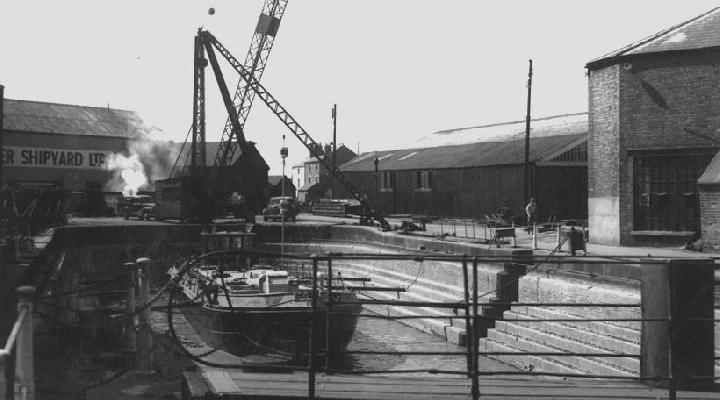
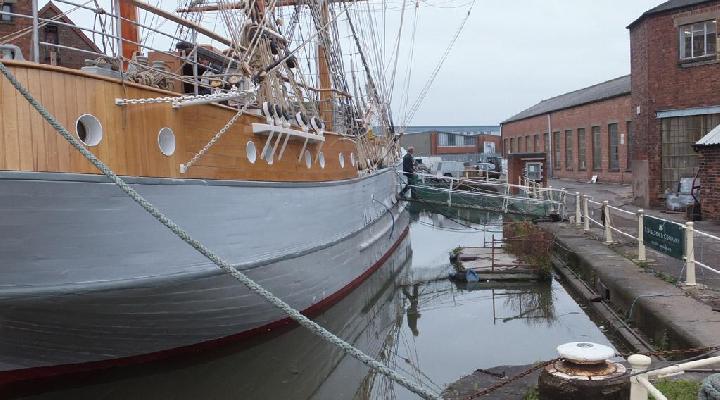
To pause place cursor inside image
The Hunt for the Stonehouse Hulks - part 1
Throughout my time researching Purton and its wonderful collection of maritime relics, I have been constantly reminded of the abandonment and sad destruction by fire of two barges in a canal-side field, a stone’s throw from Stonehouse’s Horse Trough junction on the A4008. I therefore set aside a few days during the summer of 2019, to attempt to track down these long since departed relics and unravel the story of how they came to be a well-known feature, near this inland Gloucestershire town.
To help in this, I assembled a respected team of specialists, those being Cotswold Canal Trust member and long-term friend and mentor, Tony Jones, and Cotswold Heritage and Detecting Society Chairman (CHADS) and fellow Friend of Purton, Dave Smith, who brought along his metal detecting equipment.
So, with the sun on our backs, we struck out to Harpers Field, spade in hand.
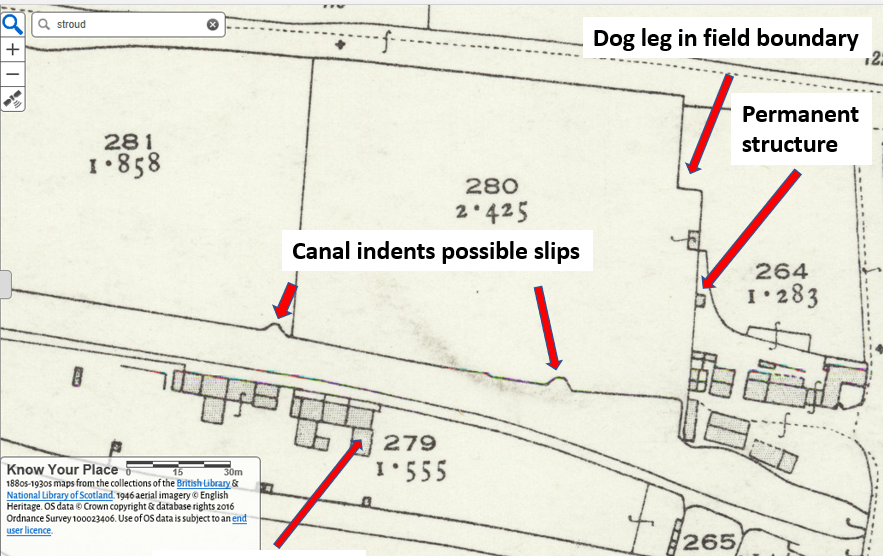

From these fantastic images, one is not only made aware of the scale of the vessels but is clearly advised of their identities. Further, by comparing and contrasting the historic map information and distinct features contained on the periphery of the photographic images, one is able to tease even more information pertaining to approximate distances to noticeable features such as buildings, treelines and dog-legged field boundary.
From these features one is further able to plot proposed vessel locations or at the very least narrow the search.

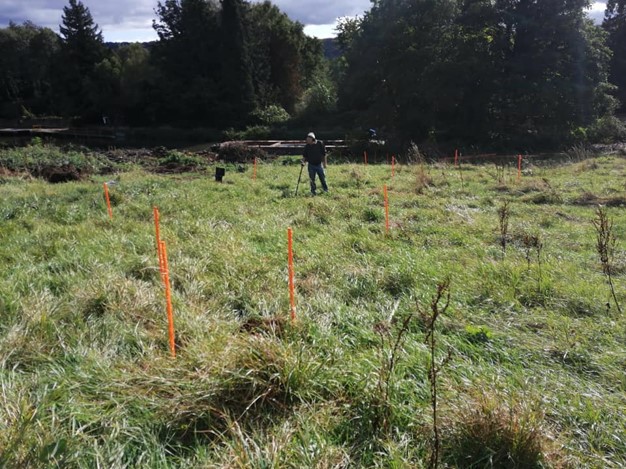

Of course, it would be mightily foolhardy for anyone engaged in this type of activity, not to obtain the express permission and support of the landowner first and thereafter narrow one’s search by conducting a desk-based investigation. That being the case, I would wish to acknowledge the fantastic Gloucestershire Archive resource of downloadable maps on the internet site Know My Place. Those not aware of this great resource, will be astounded by both the content and ease at which researcher can track back through the history of a selected parcel of land by using a variety of base and comparison maps which clearly detail the development of a region.
In the case of Harpers Field, I found the comparison map dated 1898 to 1939 to be of great use in both stripping back vegetation whilst detailing existing structures, field boundaries and possible canal slips.


Following several hours of ground truthing what is that? And item recovery, the team reconvened to sup an ale and discuss their bounty. Tony’s great knowledge of boat building and fixtures and fittings proved invaluable and left us in no doubt that what had been recovered were fixings that had at one time been incorporated in a pair of relatively large timber vessels.
It was at this time I showed the group the following image, gleaned from another wonderful electronic resource entitled Britain from Above. From this 1937 image we can clearly see both vessels in their final resting place, just prior to being consumed totally by fire for the metal fixing that each had contained. All the more surprising that we managed to find as much as we did in Harpers Field – what the scrap man didn’t get.
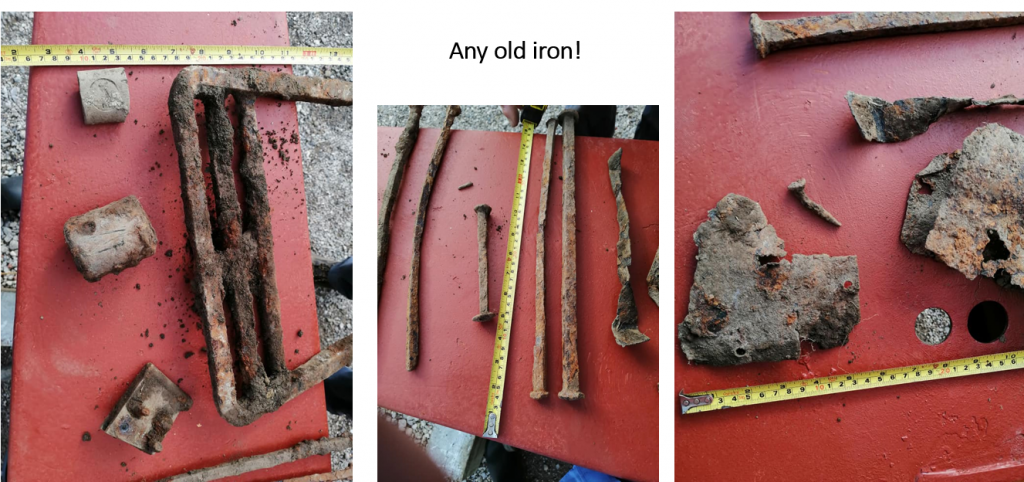
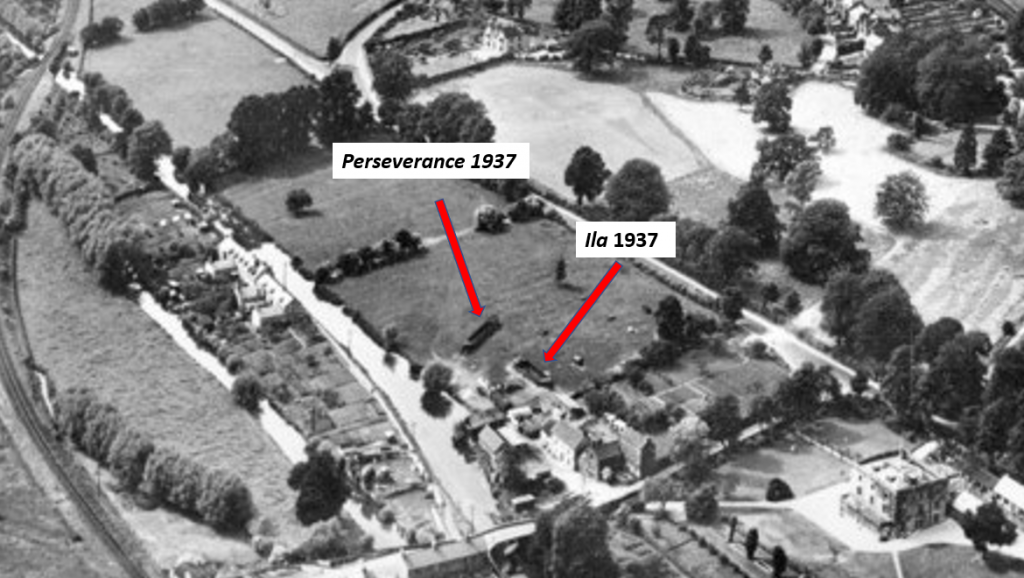
The Hunt for the Stonehouse Hulks - part II
Following a most enjoyable ground surveying exercise within Harpers Field and the subsequent recovery and confirmation of boat fixing from two predetermined areas in the south eastern quadrant of the field. Research returned to the identification and history of the vessels. This of course was made easier following the discovery of several detailed photographs, taken by maritime historian Grahame Farr 1936, which detailed the vessels were the Stroud wide beam barges Perseverance and Ila.

Built with canoe-sterns, the barges appear to have been commissioned and built specifically for use on the Stroudwater canal giving them access to the Port of Brimscombe via locks measuring 75ft 3in x 16ft 1in x 4ft 6in. Carrying loads in excess of 40 tons of cargo, notably coal, it is likely that the barges may have travelled from Lydney Dock to Framilode-on-Severn and onward to the Stroud valley and the industrial heartland of the Cotswolds.
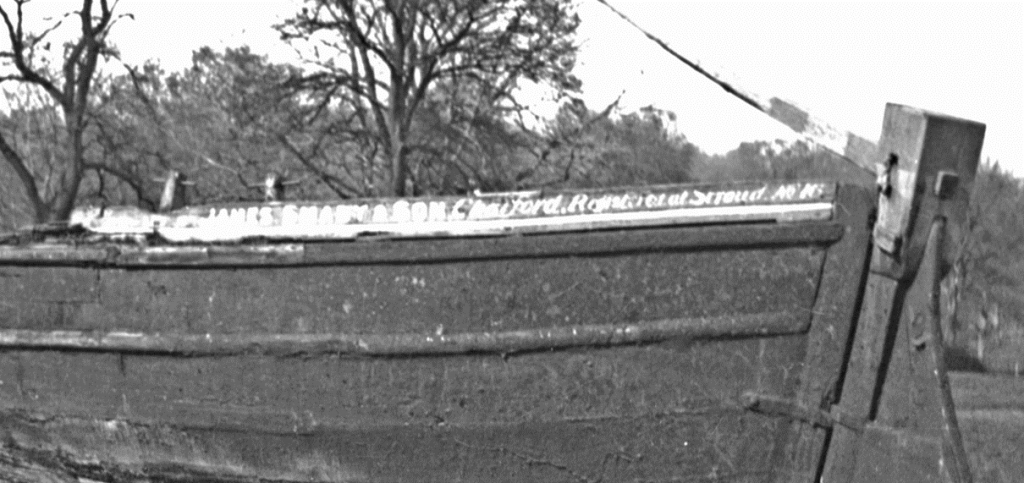
Sadly, very little is known about either barge prior to their abandonment and indeed confusion reigns in the case of Perseverance as it is thought that there was more than one barge of the same name. However, for the purpose of this piece, I remain satisfied, upon viewing Grahame Farrs index card held in the Greenwich Caird Library of the National Maritime Museum, that Stonehouse’s Perseverance is the Gloucester built, wooden fore and aft rigged, chine barge launched in 1859.
This is further confirmed by the Gloucester Records Office entry D4292/1/9 D/08 which states:
“Perseverance
27872 Glos 1859 unknown RC 18 December 1917 vessel converted to landing stage”
Ila’s history is equally proving difficult to pin-point, principally due the limited amount of archive material available in public deposits. The author of course would dearly like to be directed to such material and of course remains open to any advice or guidance in the meantime.
Made of finest Gloucestershire oak, Perseverance, was originally registered in the Port of Gloucester in 24th January 1860 and issued the Official Number 27872, with a signal code PTDC thus allowing her access to the River Severn. Her sole owner at that time was Gloucester based Roderick Rice who purchased the 67.4 x 14.1 x 3.6 (feet and inches) vessel of 41 registered tonnage. Business was not as expected as the vessel was sold 28th July of the same year to (38 shares) William Rowles of Saul in partnership (32 shares) with fellow Saul merchant Robert Hayden Jones.
29th March 1871 saw the curious change of (32 shares) to George Ford, the manager of Ryeford Mills, Stonehouse and (32 shares) retained by Robert Hayden Jones, only to see them transferred once again to William Rowles 27th July 1878, possibly upon the death of Robert, who knows?
What is known is that the Ford – Rowles partnership continued until 25th January 1889 when the Perseverance was sold to sole Bristol owner John Shelton. It’s at this time we see her re-registration at Gloucester in January 1889 and her reconfiguration to a 1 masted open sloop. Sadly, 25th March 1889 saw the 64 shares being transferred to Mrs Roda Shelton, following the death of her husband, Mrs Shelton continued to trade the vessel reregistering it in her name both in 1892 and again 1897, after which time the widow passed the ownership on 11th November 1902 to Joseph Smart, Bristol merchant.
22nd April 1910 saw Perseverance’s sale to her last Bristol owner, Thomas Robert Brown of Knowle who sold her to Frampton ship owner James Herbert on the 9th May 1910. It is believed that further to this sale, she will have seen considerable service in the Bullo Pill coal run to the Cainscross Gas Works, possibly under the management/long lease of coal merchant James Smart & Sons Ryeford, Stroud.

Dates for Perseverance’s beaching are sparse; however, readers are advised that a photo held at the National Maritime Museum Woolwich Photo Archive, detailing the beached vessel, can be purchased, (at great expense) and is annotated thus:
4b 19-l-19 Ryeford 80.1 Perseverance Stroudwater Barge (brought coal from Bullo Pill) 22.5.36 owned by James Smart & Sons, Ryeford, Reg at Stroud


What is known that Grahame’s index card has her fate marked conclusively thus:
Converted into a landing stage
Record Closed 6.12.17 Glos Reg
At Ryeford Bridge awaiting breaking up 1936
Typically, Grahame also took and recorded the following negatives:
Perseverance wd bge 1859 Gloster
1 Stern qr Laid up at Ryeford Bridge
2 Deck and treenail’s 19.04.36 (76 -77/36)

Unlike Perseverance, information relating to Ila is so sparse that huge amount of her history remains shrouded in mystery. However, and by complete chance, a photograph of her afloat at Ebley Mill does exist. Sadly, the photographer’s identity and indeed the photos back story has been lost, which clearly highlights the need to correctly annotate our photos as we take them.
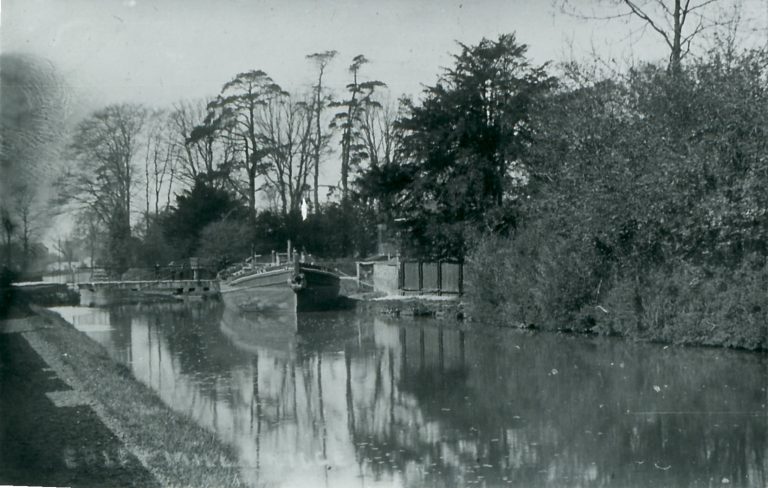
What little that can be offered regarding the Ila is very sparse, but does include a Woolwich photo of the her on the bank at Ryeford and can also be purchased via the following reference:
4b 19-l-19 Ryeford 80.1 Ila E. T.Ward & Sons Ltd
In the absence of maritime archive, the following formation came to light regarding to T. War & Sons and may be of interest:
A brief history of ET Ward & Son and the curious tale of the coal lump
A history of Edgecomb Thomas Ward & Son Born born 18 March 1826 in Holborn, London died March 1904 Stroud. Edgecombe Thomas Ward became a senior businessman and local character in Stroud after, it is said, that he walked from London to set up his business, staying first at Lydney where he worked and made contacts in the coal industry.
Thereafter he establishing a coal merchants (known as E T Ward), he settled with his family in Gloucester Street Stroud. It seems he married twice, his first wife appearing to have died, perhaps in childbirth as was common in those days.
E. T. Ward coal merchants became a huge business in the area, with branches in many of the local towns and villages. The coal was originally brought by barge from Lydney, using the canal up to Stroud. The first coal yards were at Dudbridge, one at Ryeford and one at Walbridge, Stroud. Later it became all rail hauled, with Wards having his own fleet of railway wagons.

The business remained in the family until the late 1960’s from its yard at London Road in Stroud. Further, many recall a huge lump of anthracite coal which stood at the entrance gates, outside the office and became a local landmark. This lump, it is suggested, was obtained from the Aberpergnum Colliery, South Wales colliery in 1926 and arrived as part of a coal shipment in the bottom of a railway truck, which had been filled with small anthracite cobbles. 1976, saw Wards stop trading and in doing so auction sections of this famous 6cwt lump, with the proceeds going to help provide equipment for Stroud hospital.
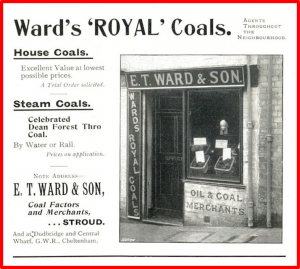
A further search of newspaper electronic archived turned up the following fascinating advert on 11th November 1932:

Finally, what is known that both Perseverance and Ila where eventually hauled ashore in Harpers Field and photographed in situ as make shift chicken coups by 1936. They continued in this guise until being consumed by fire for the iron fixings they contained. Both were initially thought to have been consumed by the same fires, however recently discovered photos taken by Stroud based photographer Norman Andrews dated 23rd April 1966, clearly shows the Ila remains in situ whilst there is only sparse remnants of the Perseverance remaining.
Leading to yet more questions– research continues.
Brimscombes Birth of a Gloucestershire Powerhouse
Recent years saw me thumbing through marine boat chandlers and brokers with a half-cocked notion of buying a historic motor vessel, when with great interest my eyes settled on the Tug Addie builders Abdula Mitchell – Brimscombe 1915. Excited by the prospect I read on, currently laying Goole, all the while thinking Tug – Brimscombe – surely not, how wrong was I!
Addie’s history takes us to quieter and indeed slower times, via the Stroudwater canal to the sleepy Cotswold wool town of Stroud and on a further four-mile eastwards to the then bustling Port of Brimscombe. Here historic visitors would find warehousing, cargo handling facilities, coal island, two pubs (the landlord of the Ship Inn, being managed by one Henry Hook, confusingly the younger brother of Alfred Henry Hook V.C. of Rorkes Drift fame) and of course ship building.
Brimscombe Port had been a hub of the regions canal system since its construction c. 1785 and typically was an ideal location for the canal company headquarters. Sadly, failing fortunes saw a massive turn down in canal traffic. Thereafter, port buildings were adapted, famously Brimscombe Port warehouse becoming a Polytechnic in 1911 and a dire need for industrial land resulted in the main basin being back filled during the 20th century.
It’s into these turbulent times one is thrust, with the coming of Edwin Clark and the opening of his 1884 boat-building business at the Hope Mill Yard. Born 1861, Edwin the son of a Reading based lead merchant, started life as an apprentice hydraulic and general engineer. As such, he could clearly see the potential for the waterside site and the construction of steam launches and ancillary vessels.
This proved to be correct and business appeared brisk it seems, as by 1893 the company went on to announce its construction of its 40th vessel. Good fortune however was not to last, as in 1896 Edwin died of chronic lung disease and by 1899 the company was voluntarily wound-up.
Step forward Mr Isaac J Abdela, born 1874 to a Corfu merchant, who immediately saw the business potential and purchased the freehold, its plant and stores by auction in 1900.
1901 saw the formation of Isaac J Abdela and Co, who shortly afterwards merged with Manchester cloth merchants Mitchell and Company thus forming Isaac J Abdela & Mitchell Ltd. Business was brisk with many of the company’s craft being kit form constructed steam launches for the export trade to South American and the mighty River Amazon. Indeed, it is fabled by some sources that the yard built the African Queen (also known as Steam Launch Livingstone). Personally, I’m not so sure, however the myth continues to propagate.
WW1 heralded full order books, with the little Brimscombe yard producing several lighters, four wooden Admiralty steam harbour launches and a tug. A forerunner perhaps of the 68.4 long x 13 wide x 7.7 deep (in feet and inches) tug called Addie in 1915.
Sadly fortunes continued to wax and wane until 1925 saw the company voluntarily wound up and despite several attempts to re-float the business, it finally closed for good in 1934, hastened some have said to the abandonment of the canal.
So, to Addie – her birth can never be described as easy. This in part of her great size which resulted in her originally being part fabricated at the Brimscombe yard, then being transported by canal to the Saul Davis shipyard on the Gloucester to Sharpness canal for final assembly.
Formally completed on the 19th June 1916, we see Addie issued with the official number 136150, listed as 47.44 gross tons and registered to Swansea and her new owners Robert Sterling Jones based in the same port. It should be noted, Addie was seen to do her patriotic duty as she was requisitioned in March 1918 on Naval service for 18 months until 22nd October 1919, when she was once again returned to her rightful Swansea owners.
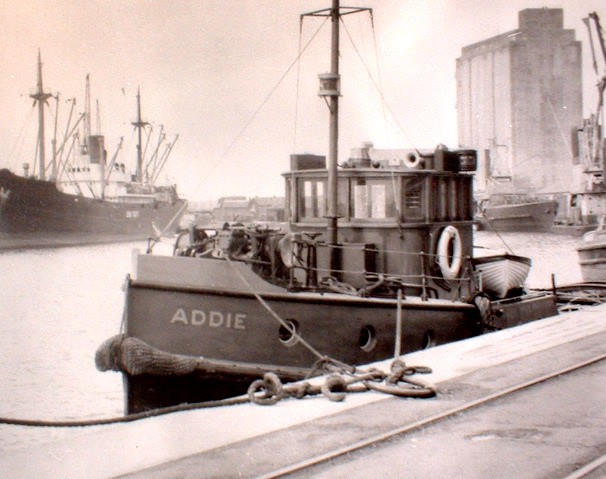
Originally in steam with a T3cyl (12, 20 x 17in), 200ihp engine and 1 screw, she would eventually be converted in 1943 to what many considered, an over powered Lincoln built Ruston & Hornby oil 6cyl, 360bhp.
This power was soon to be borne out during a routine tow which made headline news 9th May 1944. The tow, consisting of two R, & F.H. Rea owned barges the Voltaic (at Purton) and the Welcome Home, and two barges belonging to John Harker’s the Coverdale and the Dorothy initially proceeded without mishap. However, upon entering the turbulent waters south of Chepstow known as the Shoots, saw Addie’s engine being opened up so much so that her great power parted a 5-inch manila rope, sending two tail end barges charging up stream with the tide. Disaster was only averted due Addie’s powerful engine and her great turn of speed allowing a successful recapture of her escaping charges.
Undaunted Addie was to remain as a Bristol Channel tug until January of 1944 until her transfer to a Gloucester Port registry following a 1943 sale to the Sharpness Docks & Gloucester & Birmingham Navigation Company, Gloucester, who later became the British Transport Commission in 1948.
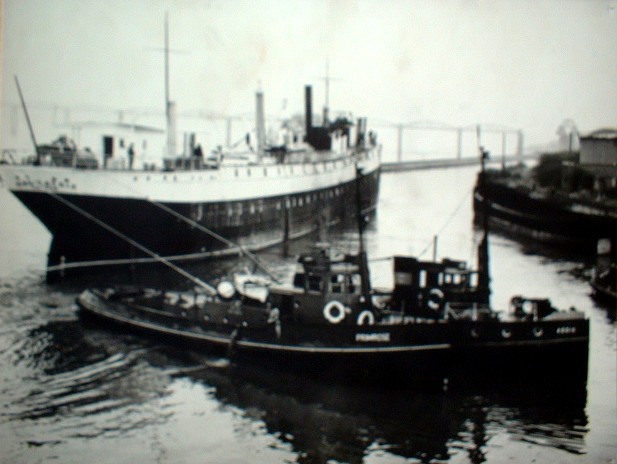
Still considered a useful river tug, it was during this period c.1951 that Addie first came to Purton and assisted in the beaching of the Foster Brother vessel King, which took place with the help of Dicky Woodward and Bill Deaton who stood guard to take shore lines in a snow storm apparently. She would return to the site many more times during her long career.
1966 saw Addie alongside fellow waterways tug Primrose have the arduous task to haul the famed sail training vessel Vindicatrix from her long-term birth at Sharpness’ old arm on her final journey to the ship breakers Cashmeres in Newport.
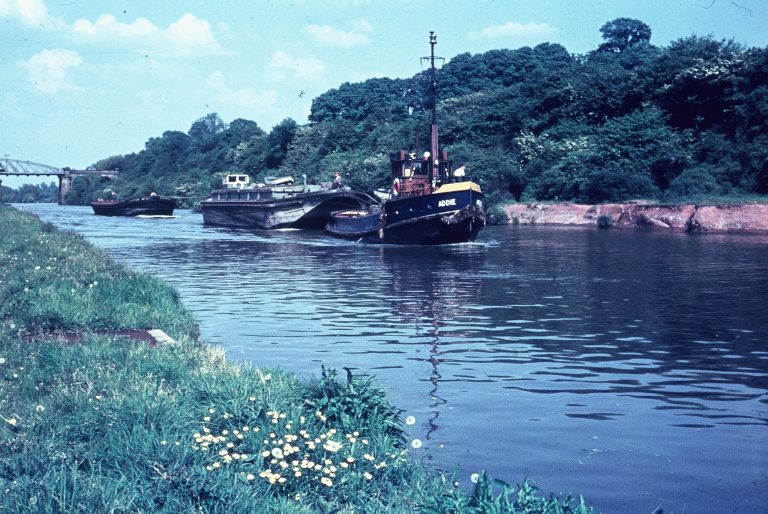
1963 saw the Commission rebranded as the British Waterways Board, and 1968 saw Addie’s eventual sale into the private ownership of Cyril Herbert Taplin, who had her based at Sharpness as private yacht. It is following this purchase that we see the Addie undergo major modifications to provide living accommodation and disabled access and by 1971 her registered tonnage was increased to 48 tons as a house boat.
In 1991 and after many years of neglect, Addie was found in a dilapidated state and purchased by her current owner Nigel Matten, Stourbridge who renovated her and by 1999 had sailed to Menorca via the Bay of Biscay.
By 2011 Addie having enjoyed her Mediterranean holiday, returned and was dry docked in Hull. Whilst there she received a full overhaul with major work being carried out to her rudder and rolling chocks. Thereafter, Addie returned to Goole, where following further internal work and reconditioning of her hydraulic steering she set sail for London. A short stay in Gallions Point, Royal Albert Basin, Royal Docks, Addie is now to be found in Blackwall Basin London, her home mooring – her future secure.
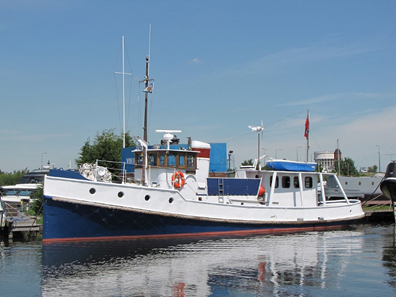
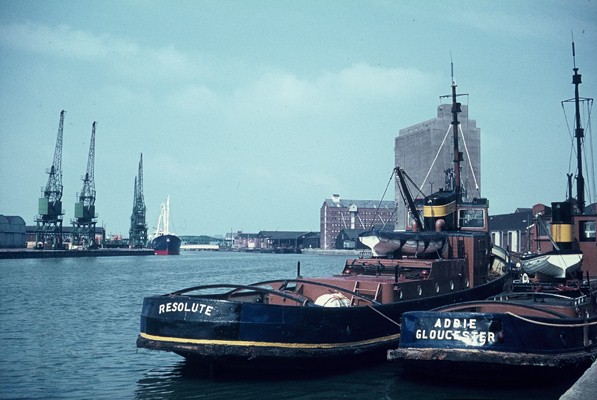
The Barge Brought Back From the Brink.
The thing one has found over the last 20 years in this exciting world of “Hulk Hunting” is that one never knows where these hulks will turn up and when they do, how satisfying it to both hunt down the many tiny jigsaw pieces of evidence and with any luck, claw back the vessels lost identity.
As with all good detective stories this process requires an analytical mind, whilst closely following a well-trodden path, that being, this process has no place for speculation or doubt. Indeed, as a researcher the one hard and fast rule that I set myself from the onset was – if there is any doubt in a piece of evidence, it is better to reject it in the first instant, as its easier to revisit it later with a clearer understanding of its context, than to forge an idea based on conjecture which once proven wrong. Results in the entire chain of thought having to be revisited and re-joined.
Seems obvious I know; however, I have had on occasion had to reject what most would consider strong evidence and only with time, be able to weave its strength, once further corroborating evidence has forged the link. It does of course not mean doubtful or weak evidence should be dismissed out of hand – merely shelved ready to be called upon should the ability to arise. A good memory is therefore a must.
It is into this understanding of research methods that I was originally notified of the possible existence of what was described as a timber Stroudwater hulk, had been abandoned to the west of Saul Junction. Armed with this information I duly set off to the site and was met, strangely, with a section of mown field.


With information taken from the Cotswold Canal Trust website, we see the canal from Framilode to Saul Junction:
…was effectively bypassed when the Gloucester & Berkeley Canal opened in 1827. However, it continued to provide an important link to the Bullo Pill Dock which was a major outlet on the opposite side of the River Severn for Forest of Dean Coal. It is thought to have last been used in about 1936……
Sadly, I have been unable to establish when and why the section, including the barge, was back filled but as we can see it is utilised as a paddock of sorts and thus may have been infilled by the adjacent land owners upon the canal’s official abandonment in 1954.
So, it wasn’t a merely a question of the vessel’s identification, first one had to confirm the vessel existence in this rural idle. Armed with this understanding, I returned to my first task of ground truthing Purton, all the while keeping a weather eye for information to confirm Saul Junctions abandoned barge. Move forward to my meeting with local Framilode resident and former British Waterways operative Dougie Munday, who duly invited me to chat and cast an eye over his personal maritime archive.
Now Dougie, it turned out knew a thing or two about the various canals of the region and as such introduced me to his written archive of a Mr C.P Hinman. Bingo! I found the following entry amongst his papers:
“In 1930 there was a barge called “Rosa” lying on the mud in the entrance basin at Framilode and there was a barge called “Stanley” the wreck of which is still lying there, close to the Junction Inn” C. P. Hinman 4th May 1948
To good to be true – location confirmed plus a name Stanley or barge Stanley as research has now shown.
With this information, I set of to the Gloucester Archives, consulted with my own archive and established that local historian Joan Tucker in her wonderfully researched 2003 book the Stroudwater Navigation, spoke at some length of the uniquely classified Stroudwater barge and joy of joys on page 148 there was an image of the fabled barge type annotated thus
“A Stroud barge rotting in the canal, west of Junction Lock, 1948…..” J. Tucker 2003
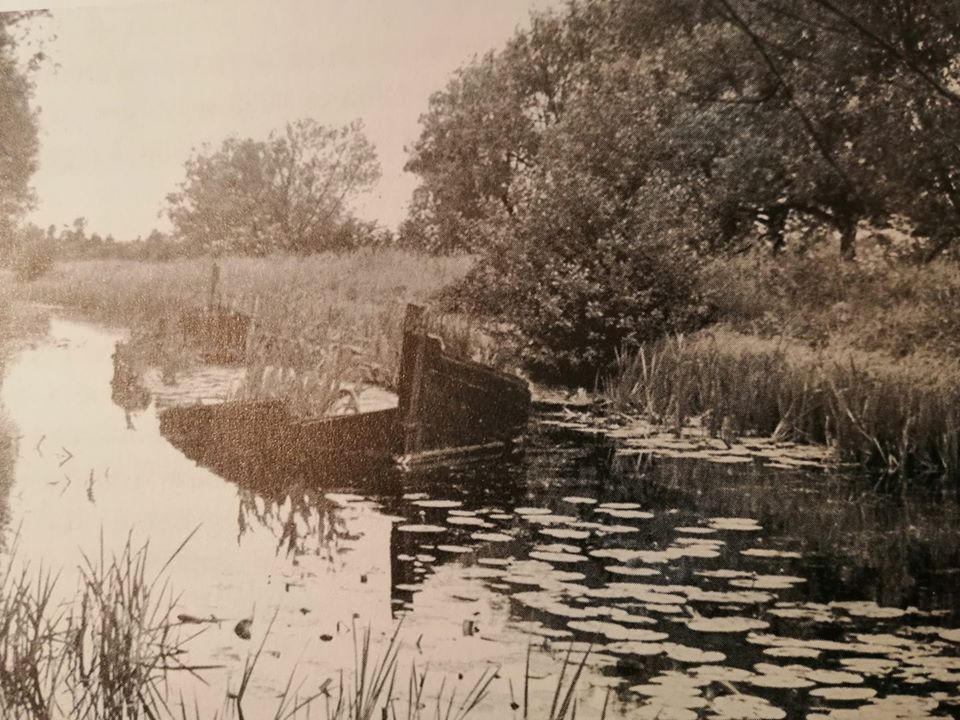

It’s here the difficult part begins – sadly as we all too often see, barge Stanley’s lowly role, has resulted in there being very little to go on, however from the limited amount that has surfaced, we are able to paint the following picture:
Firstly, one is aware that as Stanley successfully made passage to Brimcombe Port, her size will have been restricted by the Stroudwater canal lock size of 72 x 17.6 x 4.6 in feet. Moreover, as I have been unable to establish that she ever went past Brimscombe Port, one can feel confident that this was due to the smaller Thames & Severn Canal lock size of 72 x 12.3 x 4. Thus, she can be referred to a wide beam vessel – this of course is easily confirmed in Tucker’ image depicting her general size despite the vessels advanced state of decay thus further suggesting she had been abandoned some time before being photographed 1948.
If true, this may suggest a possible Joseph Barnard construction, who was employed in the construction of the double-ender at his Canal Bank yard from 1890-92 and again following his relocation in 1894 to a Monk Meadow yard south of the city of Gloucester. Readers of course may recall that several examples of Barnards handiwork litter the Purton and Lydney foreshores, including Envoy, Glenby Priory, Tirley, Llantony and Nibley. Barnards yard is reported to have remained in situ right up to 1919, however it was acknowledged that very little business was being done at that time
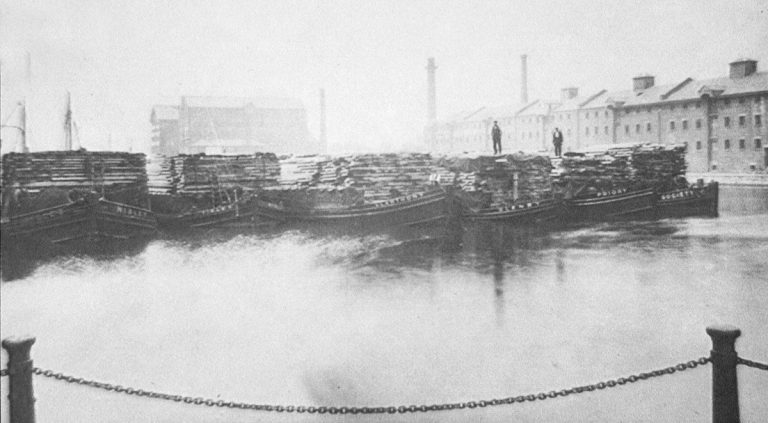
What is known, is that Stanley operated out of Sharpness in 1898 and 1900, as a lighter possibly to Chepstow for stone or to Bullo Pill for coal via the Framilode entrance to the Severn. What is also known is that her time in the River was not without drama, as remembered in the diary of Arlingham mariner, Tom Aldridge, who recorded her collision with The Severn and Wye Railway Bridge in 1907.
Further, respected historian Fred Rowbotham via his archive, certainly confirms that vessels of Stanley’s size and construction were employed in this river coal trade.
“…. These barges carried coal from Bullo Dock on the west side of the Severn to Stroud. They were double ended and carried about fifty tons and all worked under sail. They are believed to have been cutter rigged….”
Also, within Freds collection we find the following entry made by Mr J Jackson former Severn Carrier skipper thus:
“…. Capt. Jackson also remembers another rather interesting class of vessels peculiar to the Severn. These are Stroud Barges. There were four of them
“FINIS” whose wreck can still be seen at Arlingham
“SEVERN BRIDGE”
“PERSEVERENCE”
“LAVANDER”……
Technically Finis, and Severn Bridge where former cut down Severn trows, Perseverance a Thames and Severn Barge, but all available evidence does suggest that Lavender may have been a Barnard constructed double-ended Stroud barge.
So, abandonment? – based mostly on speculation sadly, other than the date of c.1936 we have very little to go on. That said, what is known she was still afloat and working as further information has been gleaned from the Ron Notts Stroud Archive, in which we see the following correspondence confirming both her continued service in 1923, her previous trade to Chepstow and her owner.
Saul May 14th 1923
Mr Snape
Dear Sir yours of 2nd May also 11th May to hand sorry I didn’t answer it at the time. I have no barge that will go outside Sharpness or below that place as when I took the windlass out to lay new decks, I did not put it back again as I had no Board of Trade reports for “Stanley”. This barge used to go to Chepstow for stone before the War since then there has been no trade to that place to keep a barge for. It would take £100 to refit again and I don’t feel disposed to spend that amount at present unless I was sure of enough work to recoup one for the outlay.
Yours truly
Thos T Andrews
It should also be noted that Stanley’s abandonment at the Junction is also considered out of the ordinary, especially as Purton had been fully operational and accepting hulks since the 1909. Moreover, vessels where routinely dumped there during the 1940s as we see with fellow Stroud barges, the Rockby, beached 17th Janaury 1946 and Tirley, beached 17th October 1947.
So why abandon her at the Junction? two trains of thought for storage or convenience.
For storage due to her location in close proximity to the adjacent buildings. It was typical for vessels to be purchased and used for the storage of materials until becoming untenable due to the vessels ongoing decay. A great example of this can be seen ref the former trow Effort being beached in the 1940s at Kempsey on the River Severn for the express use of a riverside public house to aid the cool storage of the pub’s beer casks. However, looking at Stanley’s open hold configuration this seems highly unlikely and can be easily discounted.
For convenience due to the abandonment of Stroudwater canal and the Stanley’s relatively close proximity to the adjacent Davis shipyard, who in turn would have her seasoned oak timbers to salvage from. Indeed Tuckers 1948 image would seem to suggest salvage of her timbers rather than decay.
So, in essence the most one can say is that Stanley was abandoned post 1936 and pre 1948 a window of 12 years. The author of course remains confident that further information remains at large and would welcome any help, guidance or indeed advice that will finally unravel the life and times of this almost forgotten relic……….
The Fable of the Stroud Packet
It is now understood that the Severn Trows are considered to conform to three distinct regional designs including the Droitwich or ‘Wich’ Trow (upper river design), the ‘Gloster’ Trow (typical D stern design) and the Bridgwater Trow (lower reach or coastal design). To this end, The Purton hulks can be considered a unique collection, as all three designs can be found in situ. These include J. &. A. R (Gloucester), Monarch (Gloucester), Higre (Gloucester), Mary Ann (Wich), Britannia (Wich), Edith (Bridgwater) and Selina Jane (Bridgwater).
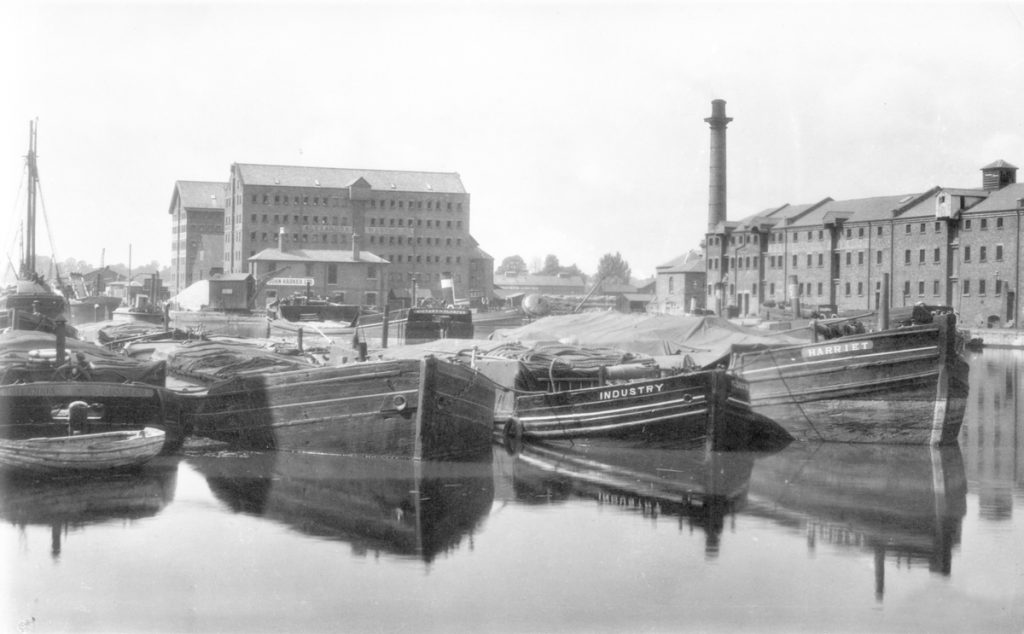
What isn’t so well known or indeed appreciated is the construction of Stroud Trows, which were built for use on the regions widebeam Stroudwater Canal. One such five valleys vessel is the aptly named Stroud Packet as built by Brimcombe Shipwright Daniel Ellis and certified fit for service 8th February 1823.
Once completed, this sturdy little vessel took the official number 11658 and was registered to the port of Gloucester after being sold to a consortium of local traders which included Owen Jones (John Sims) of Framilode, Isaac Brewer of Stroud and Thomas Harper of Dudbridge.
Constructed of locally sourced timber Stroud Packet, with her sleek dimensions 64.5 x 15.3 x 4.3 (feet and inches) could easily ply her trade from the place of her birth, westward via the restrictive locks at Eastington and on to the River Severn at Framilode, whilst carrying 45 tons of cargo.
Readers new to the complexity of vessel ownership may be interested to the learn vessels such as the Stroud Packet often saw their ownership made up of a consortium of 64 shares where upon various traders would part-own a percentage of the vessel rather than outright. Moreover, this allowed and in deed often encouraged ownership to change hands with some frequency as we can see by the following changes:
11th June 1825 Owen Jones (21 share) (John Sims) Framilode, (22 share) Isaac Brewer Stroud (21 share) Thomas Harper, Dudbridge,
26th September 1831 (32 share) John Sims Framilode, (32 share) Isaac Brewer Stroud,
17th May 1836 (32 share) Darrel Sims Ebley (32 share) Isaac Brewer Stroud,17th May 1836 William Hooper (Darrel Sims 9.2.38, Charles Malpass. Bristol 16.5.40, Willaim Gawn Bristol 1.12.40, Edwin Longney) (32 share) Darrel Sims Ebley (32 share) Isaac Brewer Stroud,
15th February 1838 (64 share) Isaac Brewer Stroud,
8th November 1845 (32 share) Isaac Brewer, Cainscross (32) James Smith Brimscombe,
15th January 1846 George Swainson (John Beard) (32 share) Isaac Brewer, Cainscross (32 share) James Smith Brimscombe,
4th July 1849 (32 share) Frederick Woods, Dudbridge (32 share) James Smith Brimscombe,
15th July 1851 – 1876 (32 share) Frederick Woods, Dudbridge (32 share) Oliver Cam, Framalode,
25th November 1876 saw Stroud Packet visit the shipwright in order to be lengthened to 73.2 x 15.6 x 7 (feet and inches), whilst at the same time be reconfigured to a Ketch rigged boxed trow, thus allowing her registered tonnage be increased to 54.56 ton.

Sadly, and as is often the case, following her relegation to dock lighter utilised within the Port of Bristol, very little is known about Stroud Packets final movements other that her transfer to Benjamin Perry Ltd following the demise of George Heads and her eventual sale to William Butt 3rd June 1937. What is known is her Gloucester registry was recorded as closed many years previously on 31st May 1928 as “No Longer Required”.
A sad end – no such thing – for we now know the Stroud Packet, after spending about 6 years as a Bristol house boat, possibly whilst in Butts ownership, she was taken over, renamed Bounty and used by Navy League Sea Cadet Corps to accommodate up to 48 boys during 12 day training course in signalling.
Sadly, she has eventually been lost to history, possibly c.1940, how and by whom assigned her to Fiddlers Green – we may never know – research, as always, will continue…..
Pauls new book Fore and Aft – Lost Ships of the Severn Seas details 121 vessels final resting place in words and over 450 pictures and detailed maps is available via email to Barnadillo@aol.com
It is during this year that we see the Stroud Packet sold to Saul owner and merchant Oliver Cam who, as sole owner, had her port of registry transferred to Bridgwater on 25th November 1876. Thereafter we can see her fortunes continued to change, with ownership being transferred to many prominent shipping families: 2nd December 1878 (32 share) Edward Stephens, Lydney, (32 share) George Warren, Saul, 19th January 1880 – 1894 (32 share) George Hy Wilson, Bridgwater (32 share) George Warren, Saul, 17th August 1894 – 1913 (64 share) H. G. Bryant, Bridgwater and it most likely during this time the Stroud Packet may have been converted to a towed barge, possibly after her collision with and damage of Champion at Dunball Wharf on the River Parret as recorded 19th November 1910. Regarless, 22nd May 1915 saw her transfer to Bristol City dock lighterman George Head Bristol, which would have without doubt resulted in her being converted very quickly there afterwards.

